Bagels

Don’t worry, we’re not going to ruin bagels for you by saying they secretly harbour cyanide or some kind of mould that kills you off in the long run. But they have crept into lists of this sort over the years thanks to their role in injuring people when slicing one in half. In 2011, an estimated 2,000 Americans were sent to the emergency room with bagel-related injuries, wouldn’t you know.
Rhubarb Leaves
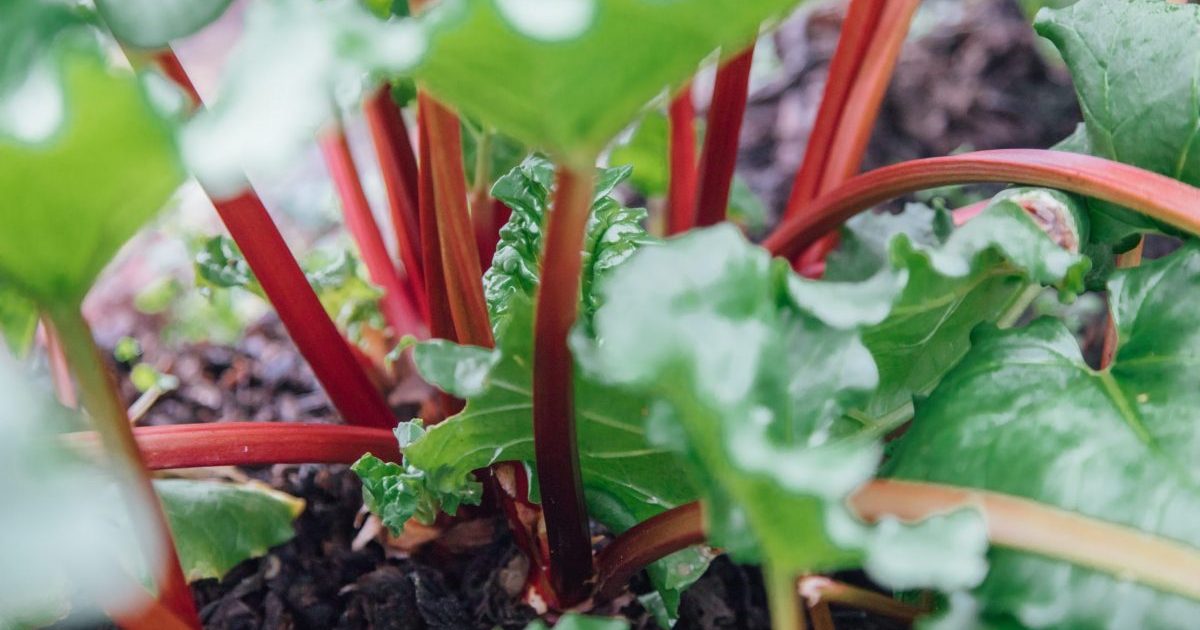
Rhubarb is a pretty-looking yet steely plant with large leaves and distinct pink and greenish stalks that are commonly used in pies and crumbles and desserts at large. Rhubarb stems are normally picked in spring. The stems are harmless and tasty to boot, but the leaves are to be avoided at all costs: they’re poisonous and can cause breathlessness, kidney failure, seizures and, in some cases, death.
Cherries
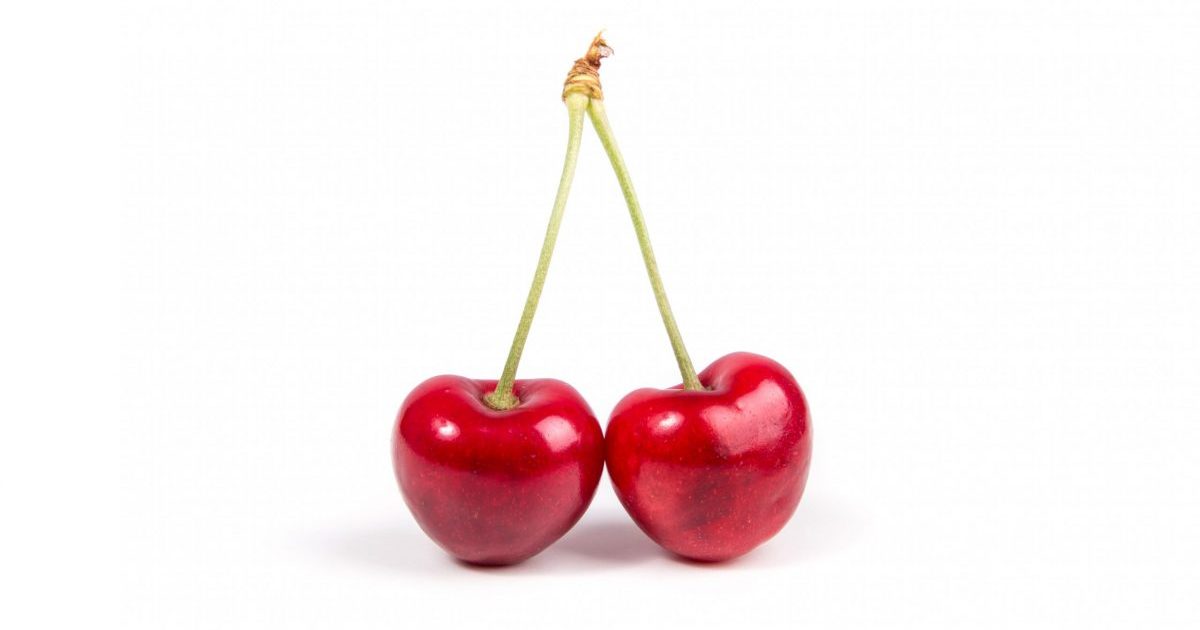
That’s right. The harmless cherry can be lethal. It isn’t the soft, sweet, body of the cherry that you need to look out for but the hard stone in the centre. Why? They’re full of cyanide. Actual cyanide. If you accidentally swallow one, don’t worry too much, as intact stones pass through your system without any trouble. Just don’t bite into them.
Hot Dogs

Hot dogs! Get your hot dogs! Such a simple call to arms for the resounding success story of a frankfurter between bread. While the hygiene of a stadium-bought hot dog may not be ideal, it isn’t actually anything to do with the ingredients that make them dangerous. It’s the shape of them. Hot dogs have a notorious reputation as a choking hazard. Make sure your kids aren’t going ham when eating one.
Cinnamon
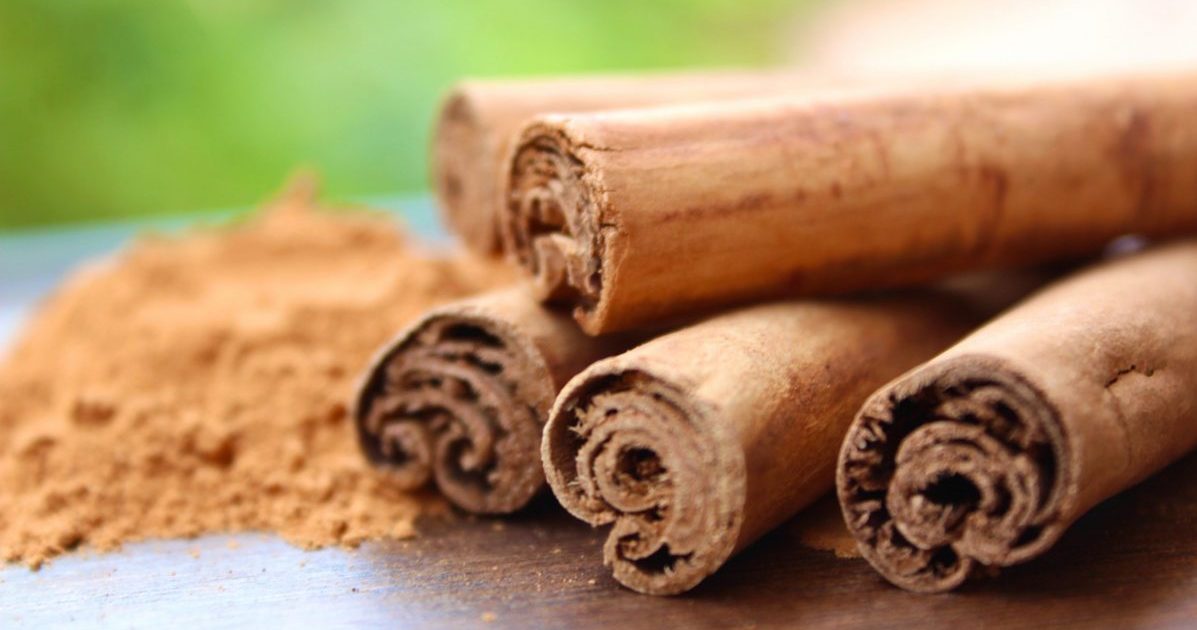
Any normal amount of cinnamon, of course, would not result in an early grave. Including some in your baking is perfectly safe. What isn’t safe is trying in consume overwhelming amounts at once as we saw with the cinnamon challenge. As soon as this spice coats your mouth it gets rid of all moisture making it impossible to swallow. If you inhale, it will only result in choking and severe damage to the lungs.
Puffer Fish
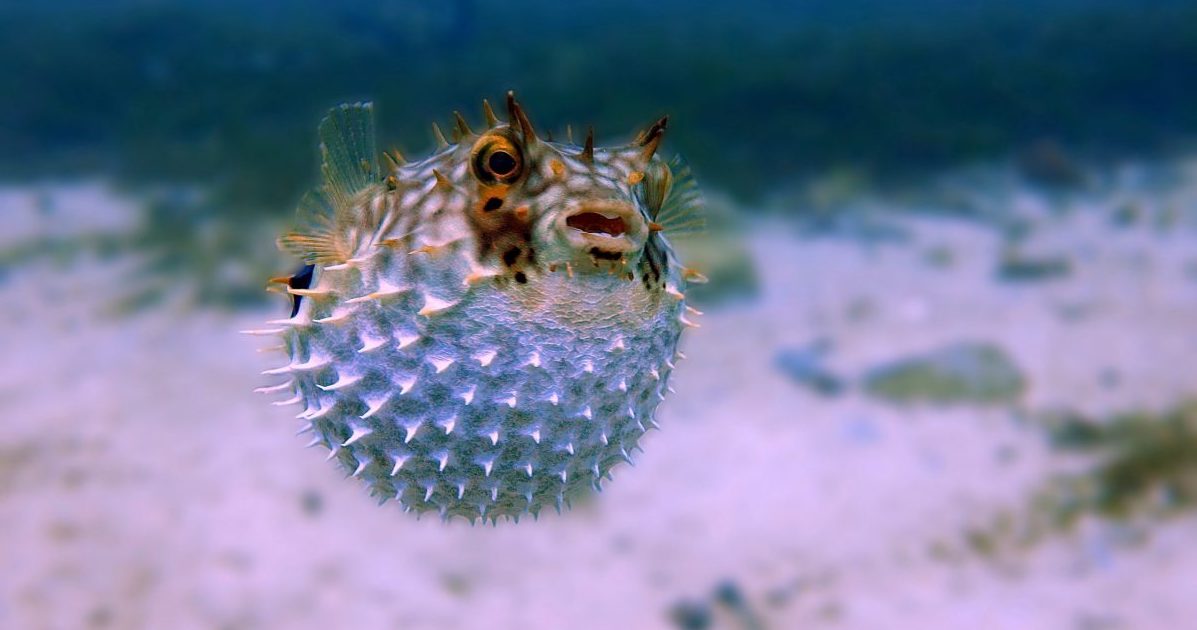
I mean, look at that. Just look at it. That is not something that God would create for human consumption. And yet, some people see one and think: “Get that in my mouth!” Unsurprisingly, the puffer fish - or Fugu - is lethal. The skin and certain organs contain an extremely poisonous toxin that can cause paralysis in a human and even death. Word to the wise: let’s not eat the terrifying, hedgehog fish.
Honey

Natural honey contains a poisonous toxin called pyrrolizidine alkaloids and therefore must go through a pasteurisation process to eliminate it. Left unpaseurised, honey is very, very dangerous. Just one teaspoon of the stuff can cause dizziness, headaches and vomiting that can last up to a day. More than one teaspoon can even kill you.
Cashew Nuts
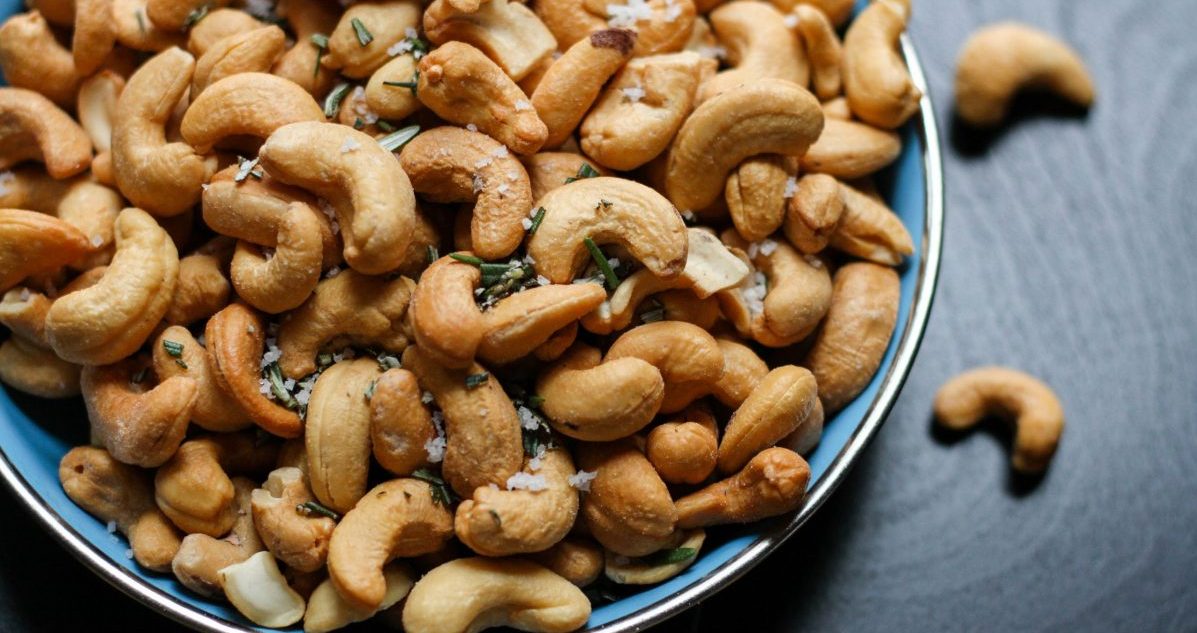
Heads up: those raw cashews you see in shops aren’t actually raw. They’ve been steamed to remove urushiol, a chemical that is also found in poison ivy. Actual raw cashews can prove fatal and would never be sold in shops. If you happen to go a hike somewhere which is teeming with raw cashews, give them a miss. They’re not guaranteed to cause you harm but the odds are stacked against you.
Ackee

Have you heard of ackee? Probably not. And that’s for the best, it really is. This pear-shaped fruit has to be ripened fully before human teeth can dig their way into one, as it contains toxins that can cause fatalities. This is such a controversial fruit that importation of it is actually banned in the United States. You can, however, buy it canned, which is safe enough.
Kidney beans
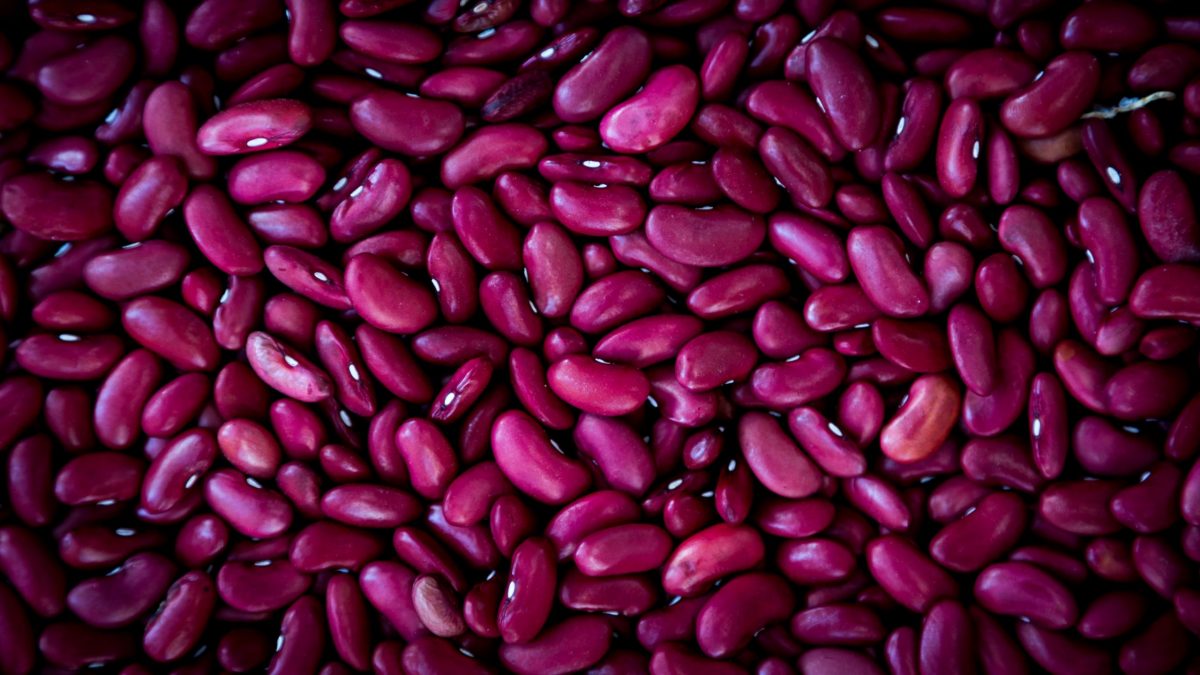
We all love a kidney bean. No respectable chili con carne is made without them. They’re also very good for you… unless prepared haphazardly. To avoid any trouble, soak red kidney beans for several hours to remove lectins, which are stomach cell-killers. Cook and drain beans thoroughly to get rid of any linamarin, a chemical compound which can turn into hydrogen cyanide. Or just buy canned kidney beans which are ready to consume.
Elderberry

Elderberries are frequently used in jams, wines and even teas, but their seeds are to be treated with caution thanks to their fatal levels of glycoside. If elderberries aren’t strained properly or fully ripened when used to make a jam, for example, it could cause extreme nausea and potential coma, if not death. You would have to drink five cups of elderberry juice to be in any serious danger, however.
Bubble Tea
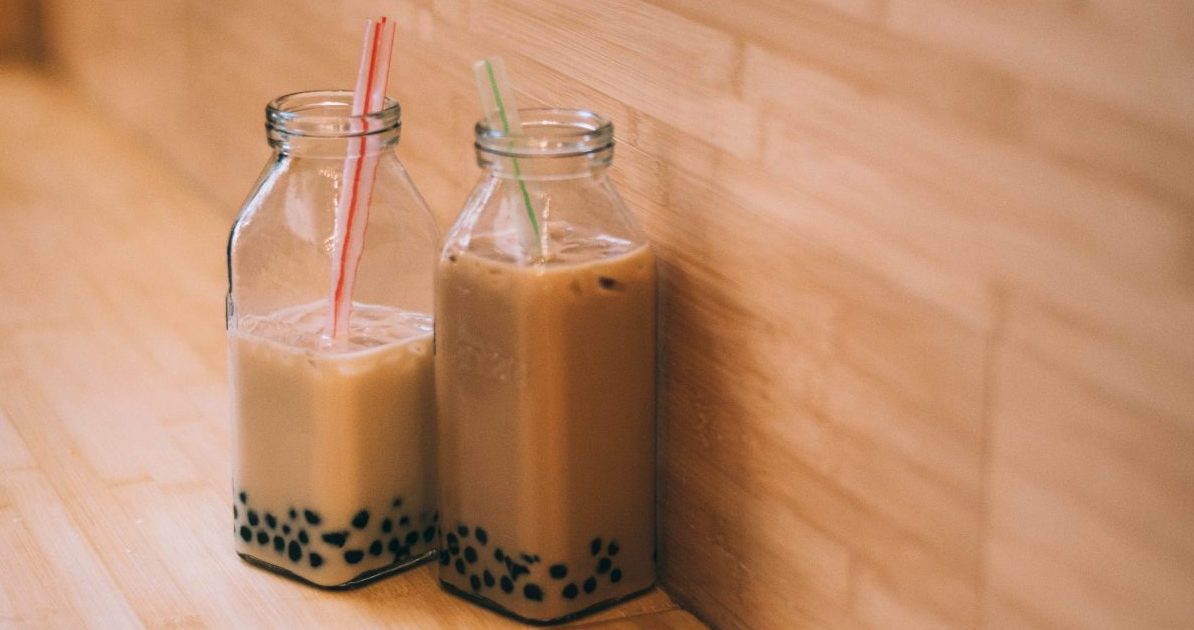
Since when was cyanide in so much food? Even the cutesy, Instagram-friendly bubble tea isn’t safe from this poison. Technically, it’s the cassava (or tapioca) that you find sat at the bottom of this tea that can kill an adult cow on the spot. For humans, the risks aren’t necessarily better. If prepared incorrectly or eaten raw, this root vegetable can be deadly. That being said, your everyday bubble tea, or boba, is perfectly safe.
Castor Oil
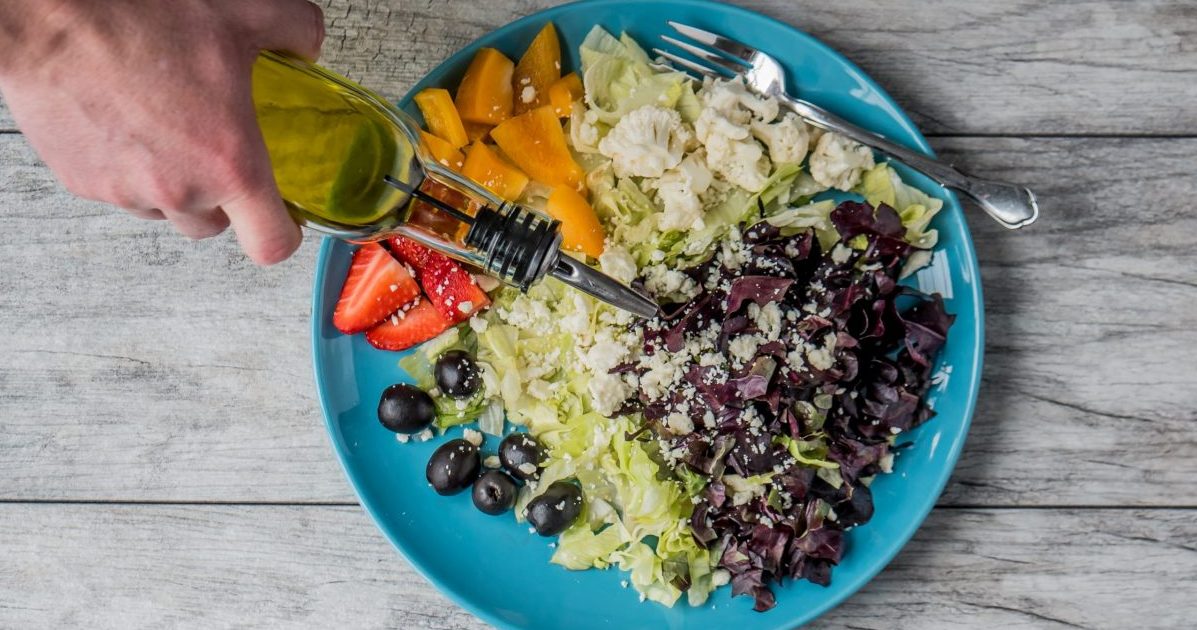
There’s a reason you don’t have castor oil in your like you do vegetable or olive and that’s because it comes from the castor bean, which are loaded with ricin. One single castor bean has enough ricin to kill over 1,000 people if the toxin is injected or inhaled. The oil form is, obviously, not as dangerous, and used in skincare products, plastics and varnishes.
Rice
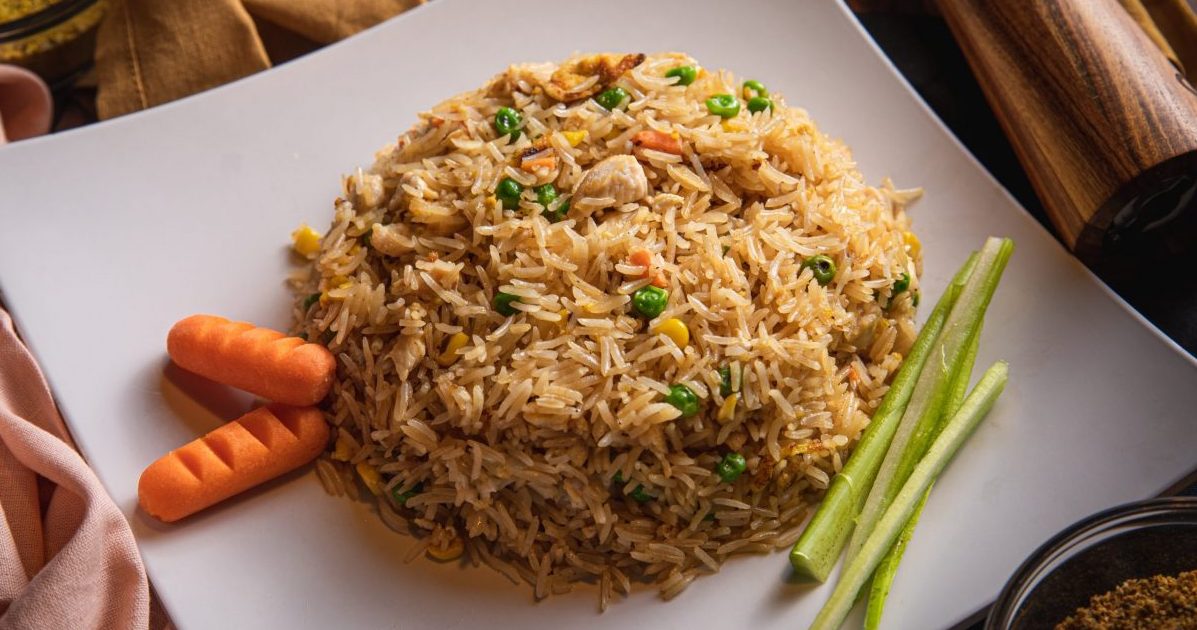
Rice contains arsenic, a toxin that can end in vomiting, vertigo and abdominal pain when consumed in big quantities. Brown rice carries the highest levels while instant carries the lowest. While it would take a boat load rice eaten in one sitting to cause any short-term harm, eating even low doses of arsenic over time can lead to heart disease and bladder cancer.
Peanuts
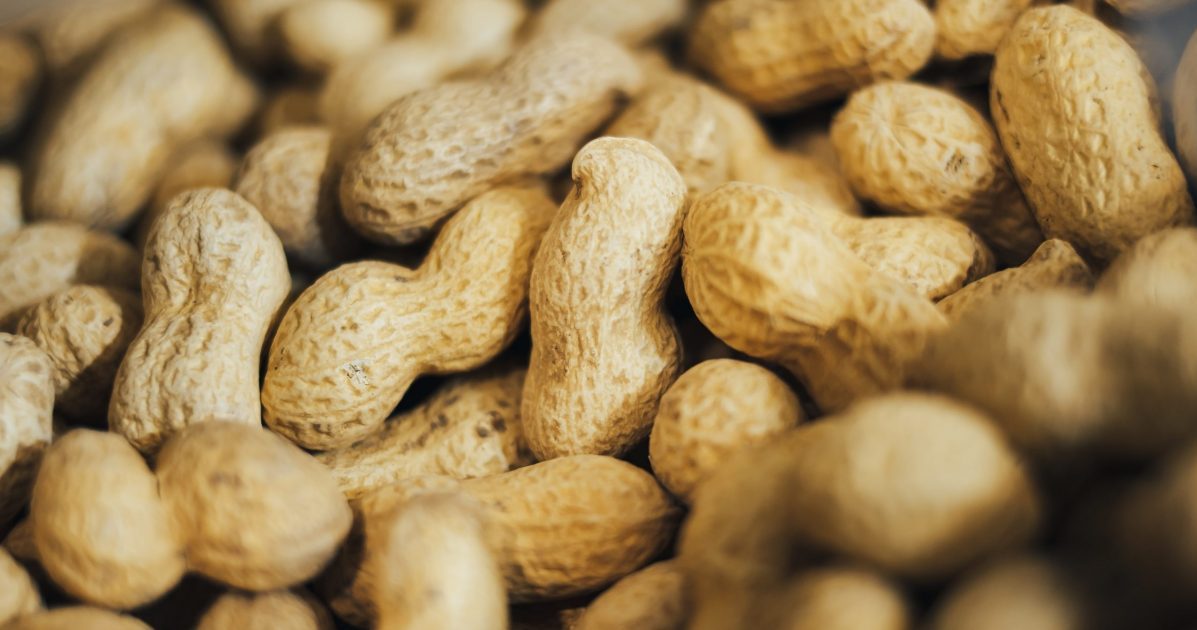
You knew this one was coming. Peanuts are as universally adored as they are reviled by those with allergies. The most severe response to peanut exposure is an anaphlyaxis, which can cause constriction of the airways and loss of consciousness. Let it be known that a peanut allergy can put someone at risk just being in the vicinity of anything containing peanuts. As such, this salty snack has been banned from most major airlines.
Potatoes
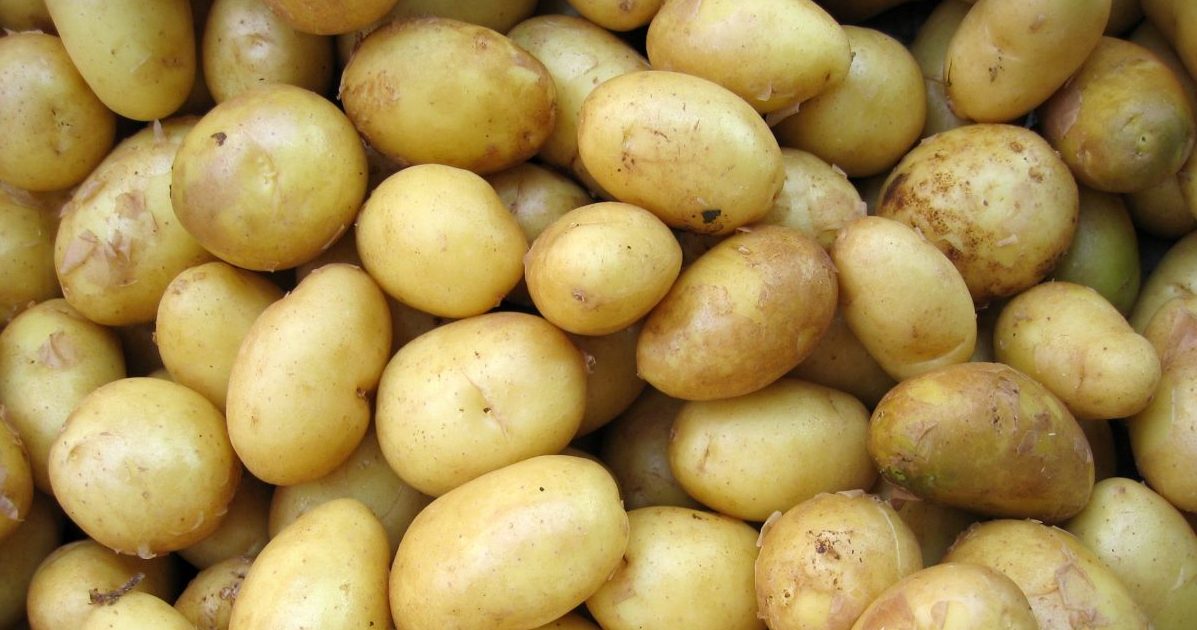
Thinking of sticking a few golden, crispy roast potatoes on your Christmas dinner this year? Think again – unless you fancy a trip to the emergency room. Although, potatoes are 99.9% harmless, if handled improperly they can produce solanine, a natural pesticide toxic to you and I. Solanine poisoning can be as benign as diarrhea or vomiting or as serious as cardiac arrest, so watch out for green looking potatoes.
Taro
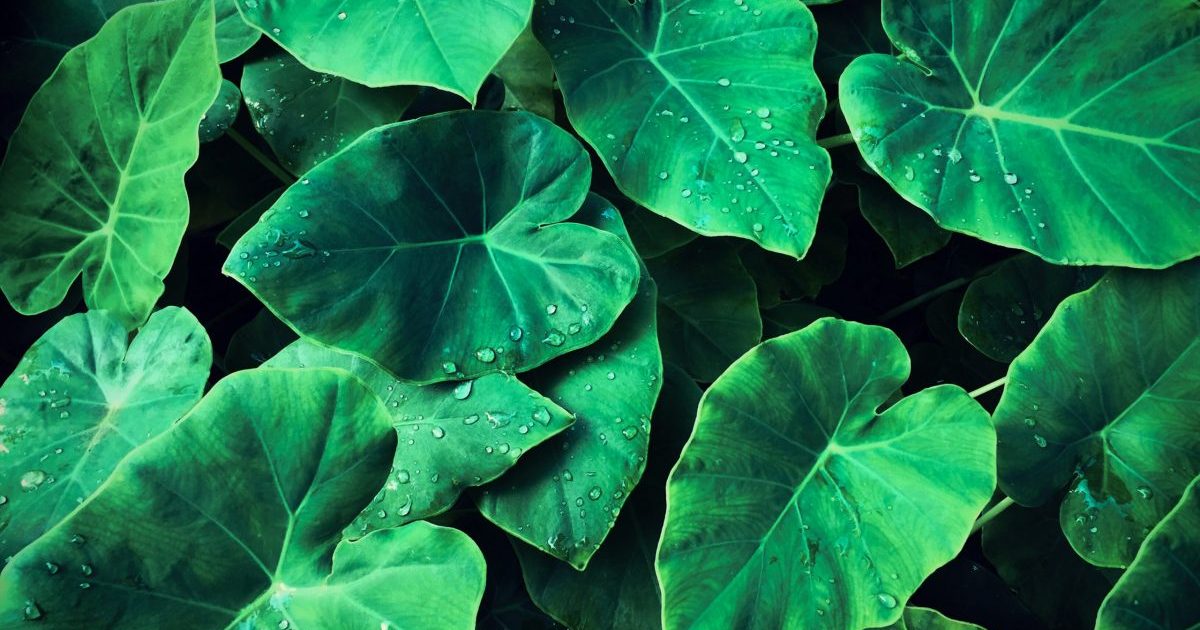
Here’s another case of something being popular and safe when cooked and prepared, and deadly when eaten raw. Taro is found in Southeast Asia, the thick stems and leaves of which are consumed as vegetables. In their raw form, they contain calcium oxalate, a chemical compound that can cause kidney stones and even death. Make sure to roast, boil or bake the life out of your taro.
Ghost Pepper
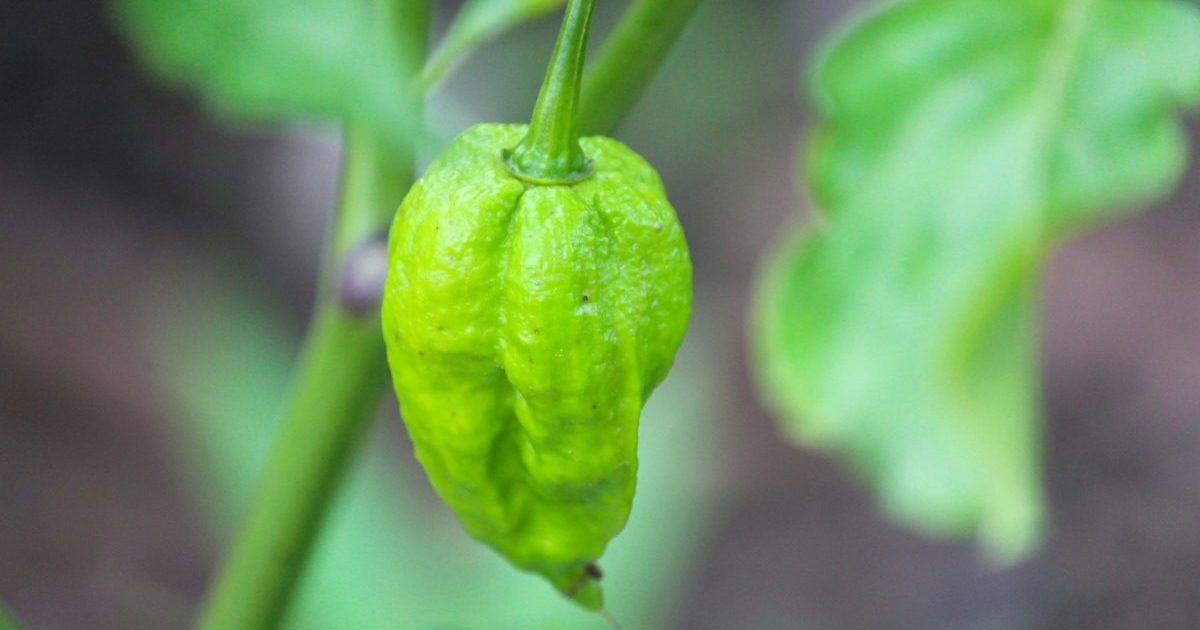
This is probably the first entry on the list that will make sense to everyone. The ghost pepper is one of the world’s hottest foods and if you possibly can, avoid eating any of them if you don’t have the constitution to withstand one, never mind vast quantities. These hybrid peppers have been known to trigger serious stomach issues on top of seizures and heart attacks, which could obviously be fatal.
Bean Sprouts
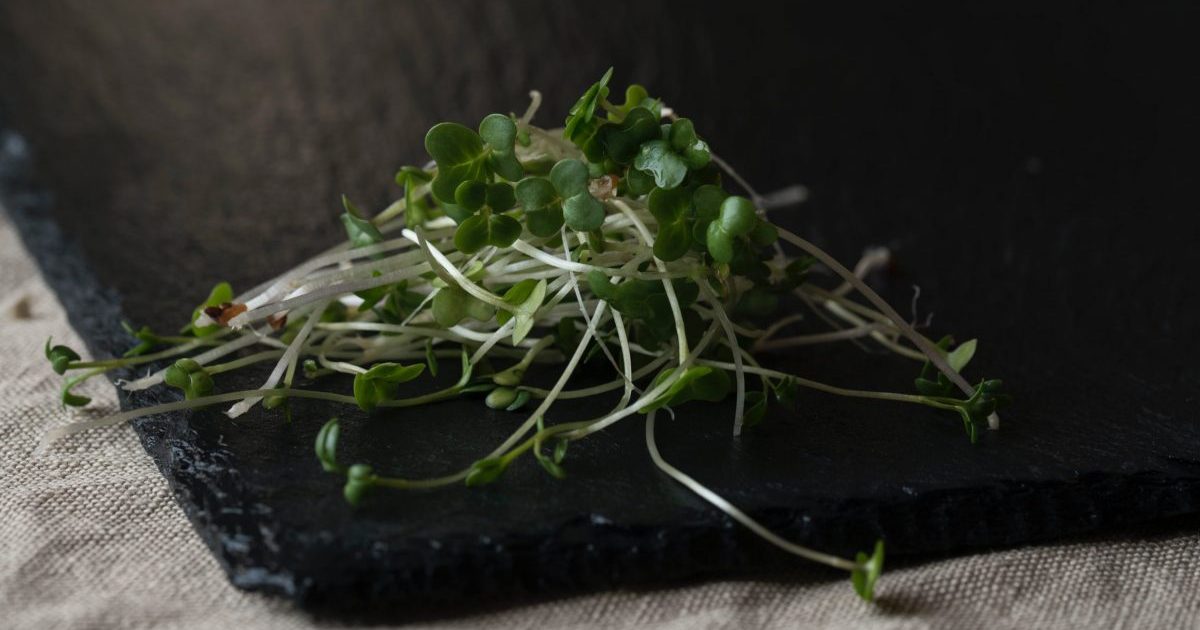
Raw bean sprouts have been linked to countless cases of food poisoning in the past and is advised by most medical professionals to not be eaten unless cooked through or labelled ‘ready to eat’. Raw bean sprouts can be easily contaminated with bacteria and a high risk of carrying foodborne illness. They’re also grown in warm conditions ripe for the growth of Salmonella, E.coli and Listeria.
Dry Ice

Dry ice may look like a friendly cube of sugar but stay away! Yes they are used in cocktails to create that atmospheric smoky effect but don’t go anywhere near the actual ice, which is frozen carbon dioxide with a temperature of approximately -109ºF (-78ºC). This is cold enough that it can almost instantly kill skin cells and even cause frostbite. Put some in your mouth and it’s game over.
Microwave Popcorn
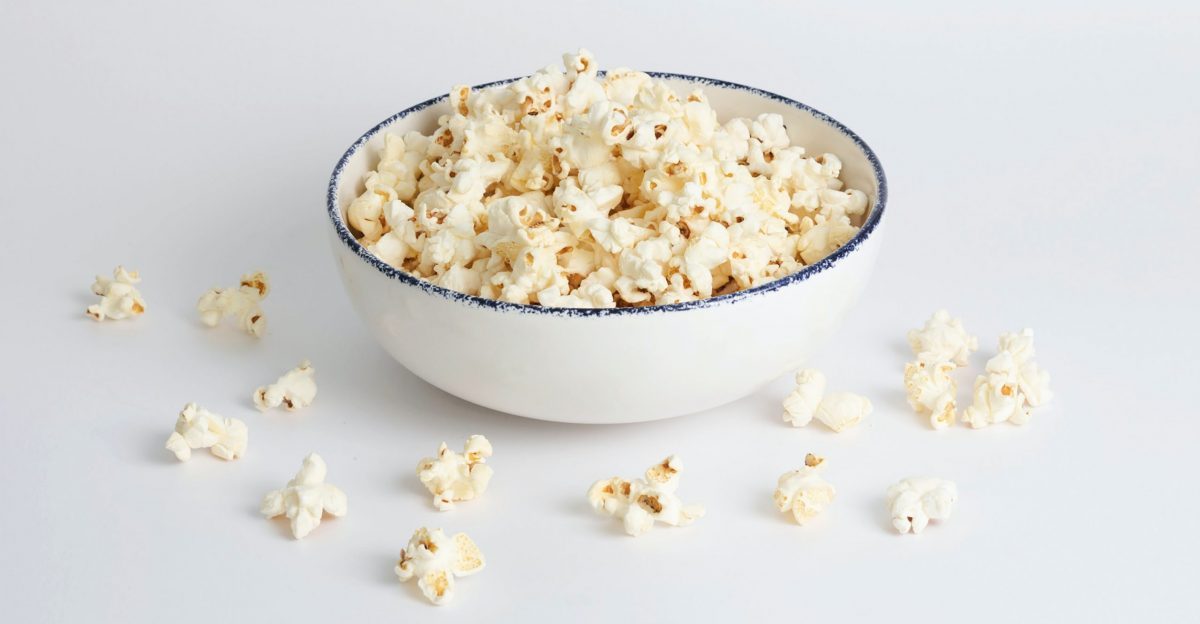
We’ve all, at one time or another, thrown some popcorn into our microwave and put on a good film to enjoy it with. But as it turns out, we’ve been dancing with death this entire time. Microwave popcorn has been linked to a serious lung disease known as popcorn lung. Diacetyl, a chemical used to make microwave popcorn flourish with a buttery taste and aroma, is linked to extreme and irreversible lung damage when inhaled in large amounts.
Marshmallows

Marshmallows, for decades, were seen as tasty, chewy treats for both children and adults. Its image became synonymous with campers who would took to heating them up over a crackling fire. And then social media happened, and the humble marshmallow was brought into disrepute. the Chubby Bunny Challenge, in which punters are dared to stuff as many marshmallows into their mouth as possible, ended up killing two people. As such, these sweets are now seen as a hazard.
Live Octopus
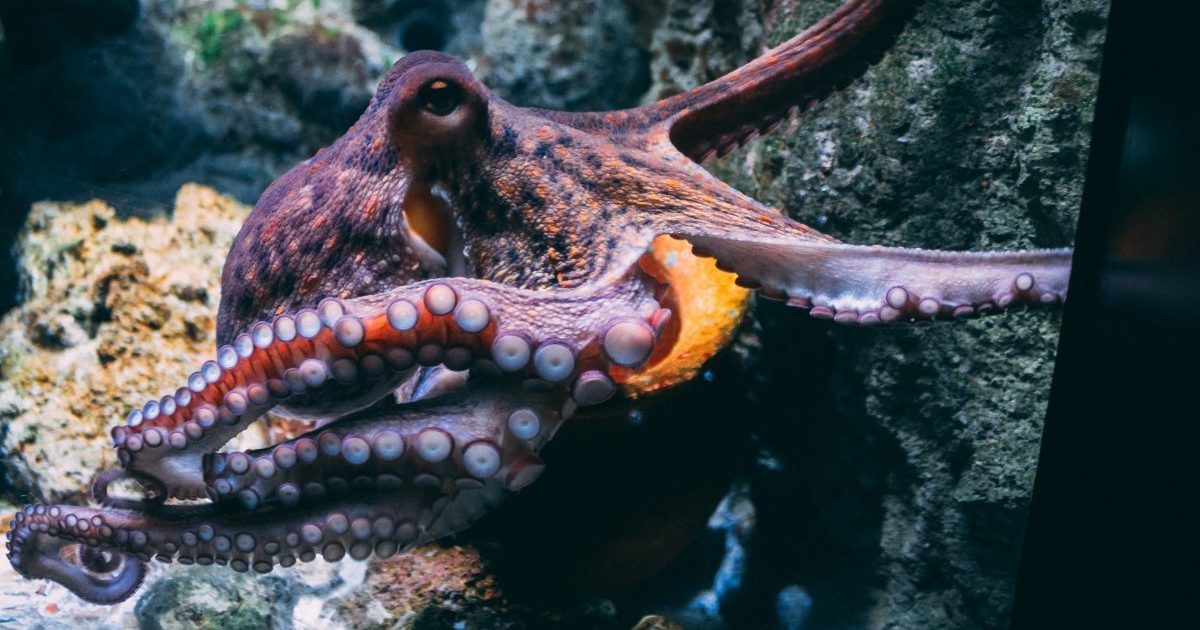
Again, like the puffer fish, the live octopus doesn’t exactly scream ‘digestable food’ but over in Japan, ‘Sannakji’ is considered a delicacy. The thing was live octopus, though, is that the suction cups can get stuck to your throat if you don’t chew thoroughly. So either be highly vigilant when eating this stuff or simply eat something else. There is a lot of food in the world that isn’t alive and that won’t stick to your throat!
Raw Eggs
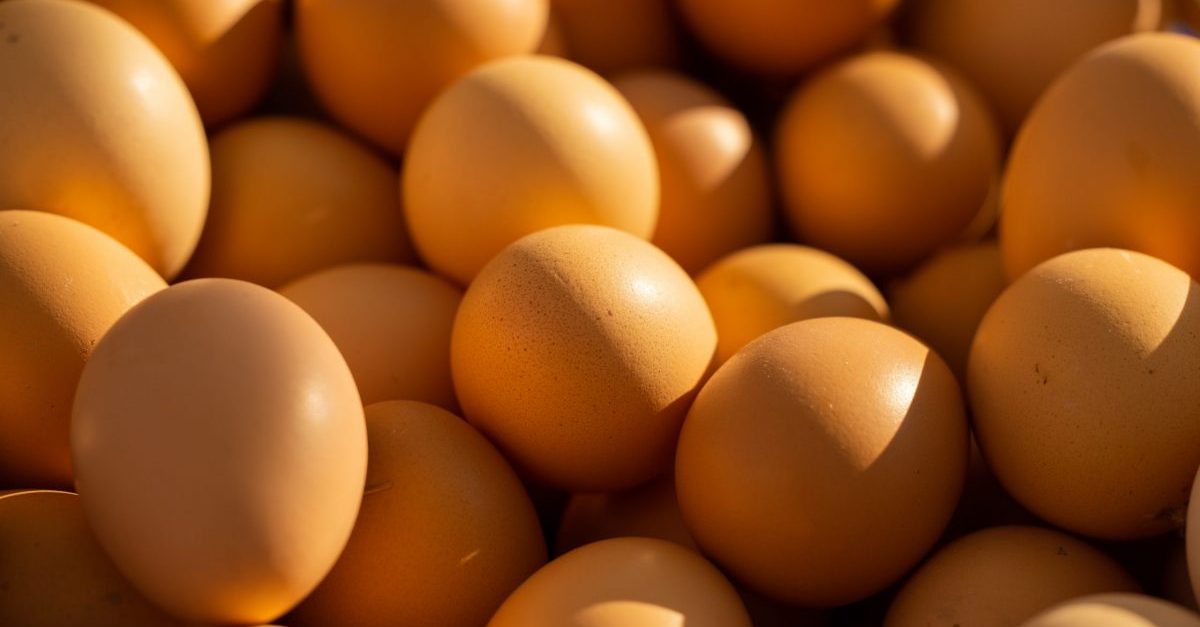
A a yellow ball surrounding in a transparent goop doesn’t look appetising, but you might not know just how dangerous it can be when consumed, especially when there’s a ton of videos out there of bodybuilders downing dozens of them. Uncooked eggs can contain salmonella bacteria, which can cause gastroenteritis in humans. With a weaker immune system, this can sometimes prove fatal.
Nutmeg
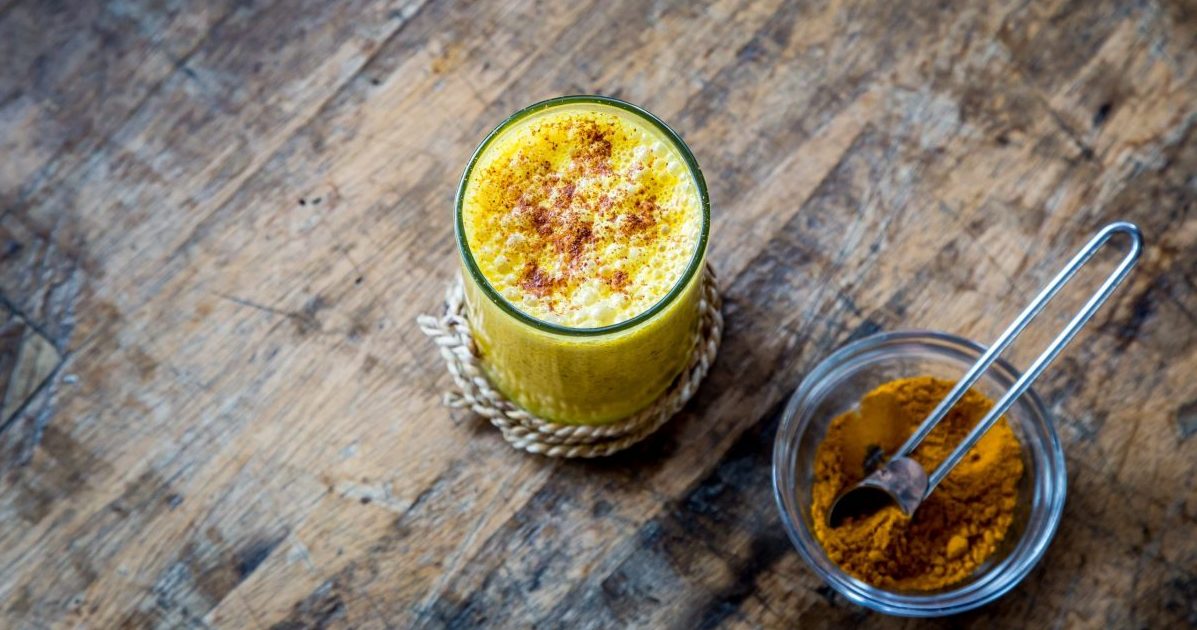
If you’re the type of person who binge watches The Great British Bake Off, your food cupboard is probably packed with nutmeg. It is to baking what oregano is to Italian food. But don’t go overboard with the servings of nutmeg, as consuming too much can lead to psychotic symptoms such as hyper-excitation, hallucinations and disorientation.
Almonds
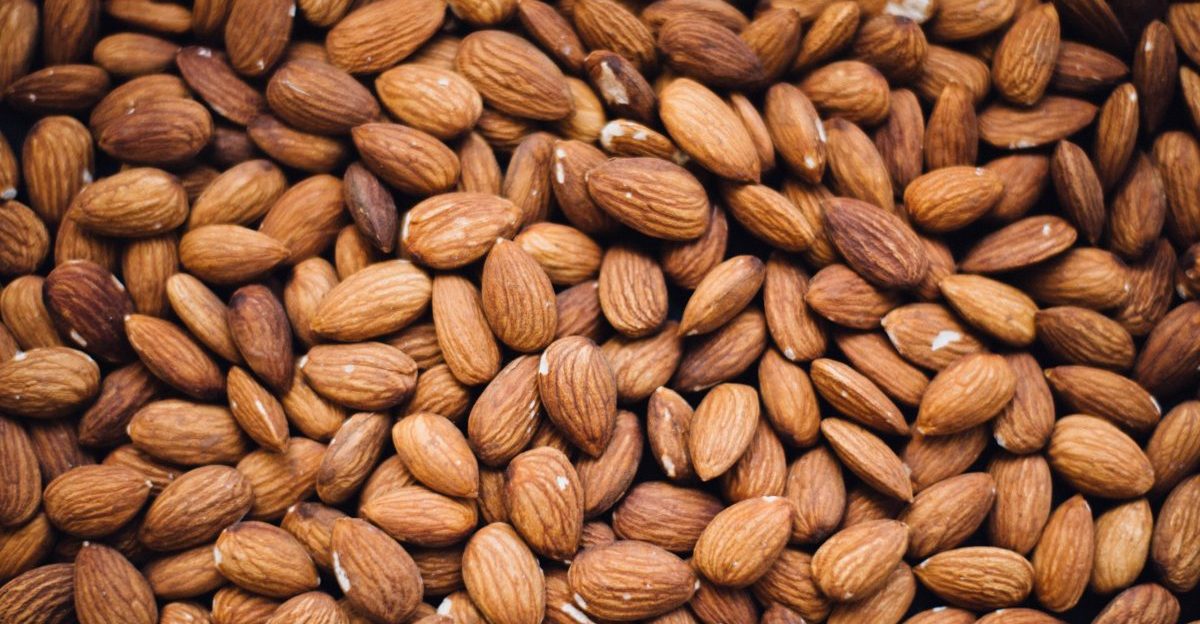
These days, almonds are basically a byword for good health. Along with avocados, they’ve become a byword for health-conscious youngsters with the wrong financial priorities. But in their raw form, almonds are hardly a cosy vegan utopia. They require a specialised heat treatment in order to rid them their natural cyanide levels.
Shellfish
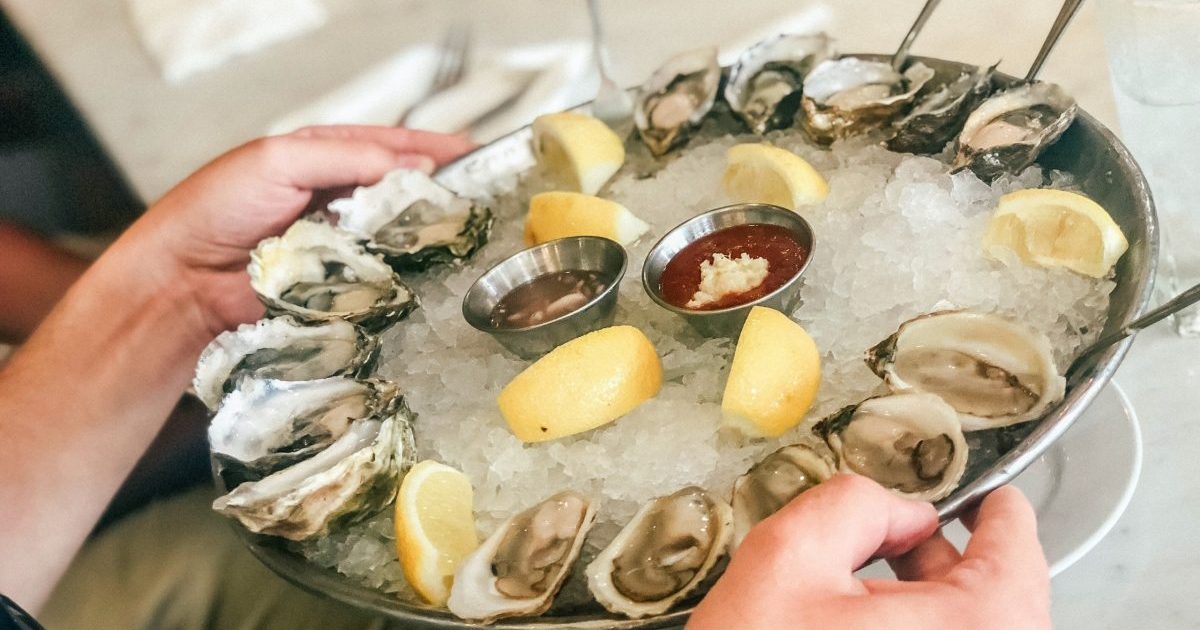
The Centers for Disease Control and Prevention estimates that over 50,000 cases of illnesses result from eating contaminated shellfish annually, so tread carefully when you’re tucking into a bowl of these things. Shellfish can live in contaminated water, which means they can store bacteria and viruses, biotoxins and pollution, and that isn’t a good time for your stomach. Shellfish are so notorious that the British royal family have a ban on eating them whenever they travel.
Casu Marzu
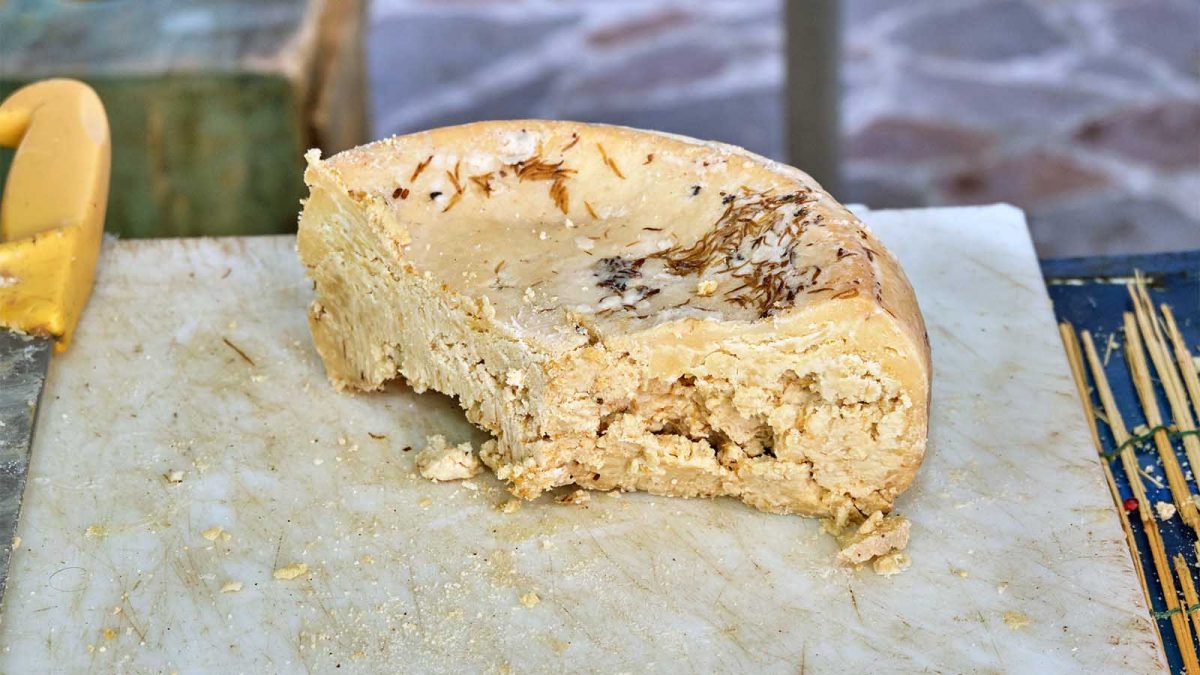
Who’s up for a serving of this traditional Sardinian cheese extra-fermented by live maggots! Nobody? Really? How odd. That’s right, maggots - and it bears repeating: maggots - partially decompose this cheese making it a hot topic among health professionals. In America, at least, it is banned for sanitary and hygienic reasons.
Raw Milk
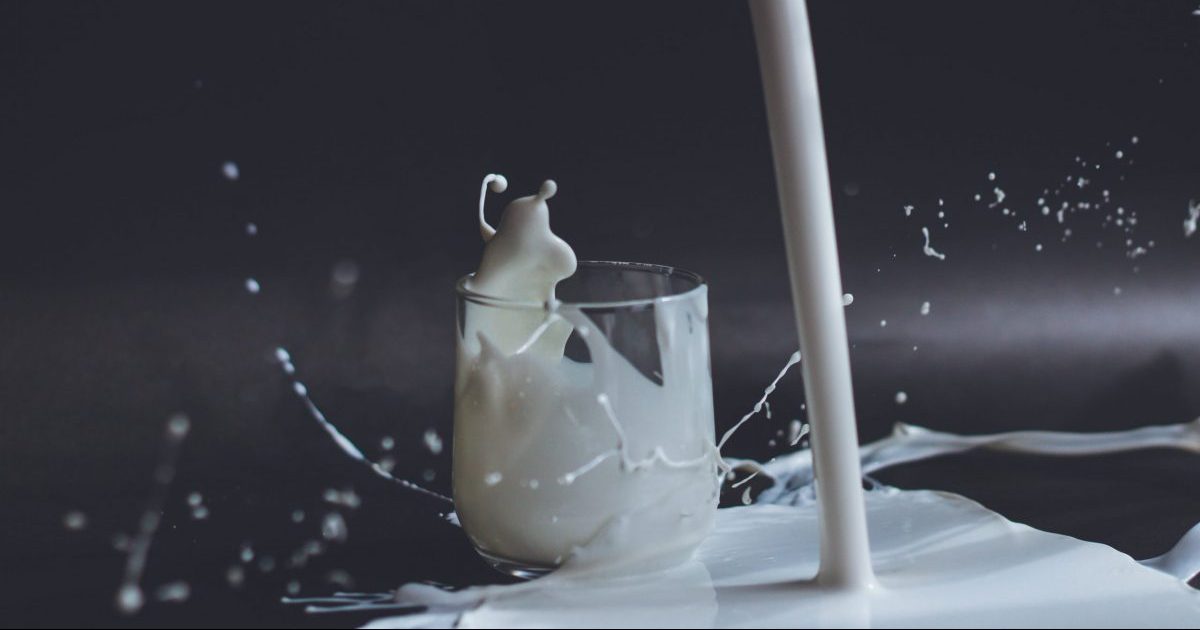
Some folks out there still prefer their milk straight from the animal as opposed to the more common pasteurised milks you find on the shelves. No, not like that! Not directly from the animal. Unless you’re from Norwich. Anyway, even some bottled raw milk can expose anyone who drinks it to E.coli and listeria. Make sure to keep these stuff away from young children, who are especially at risk.
Hákarl
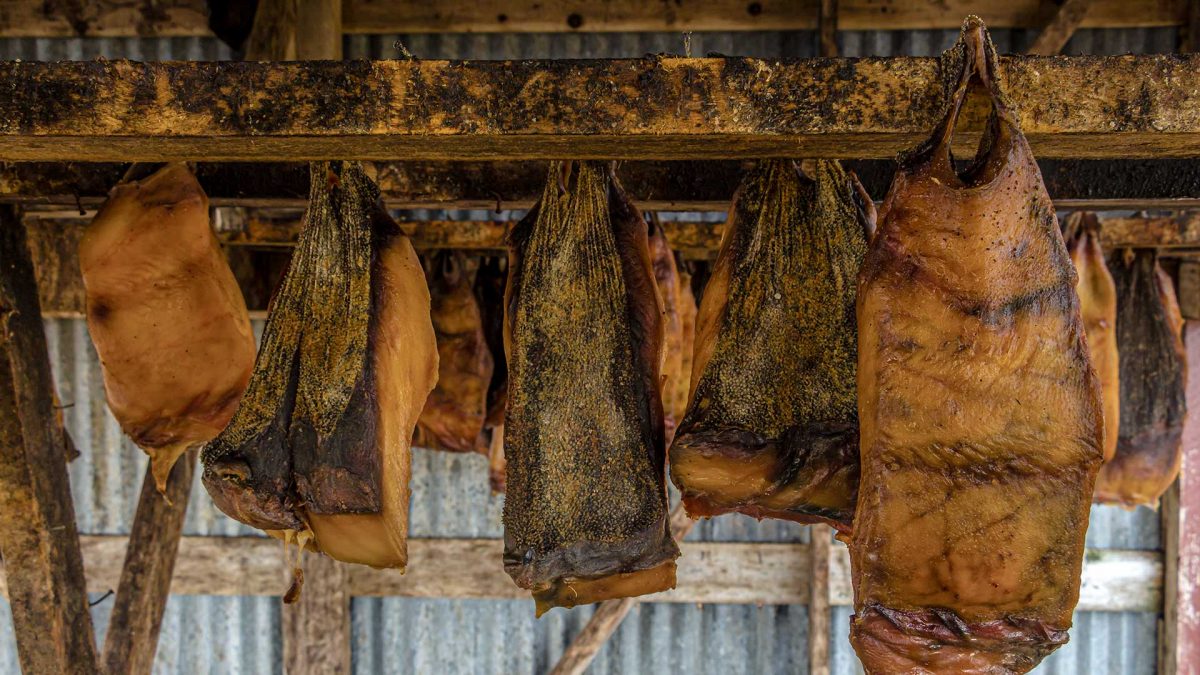
This traditional Icelandic dish is made from Greenland shark meat that is cured and hung to dry between three to five months. They do this so the high levels of urea and trimethylamine oxice in the shark’s flesh are neutralised. Greenland sharks don’t have uninary tracts which means poop and other toxins are filtered through its skin. Eating this uncured meat can cause convulsions and, you guessed it, death.
Lima beans
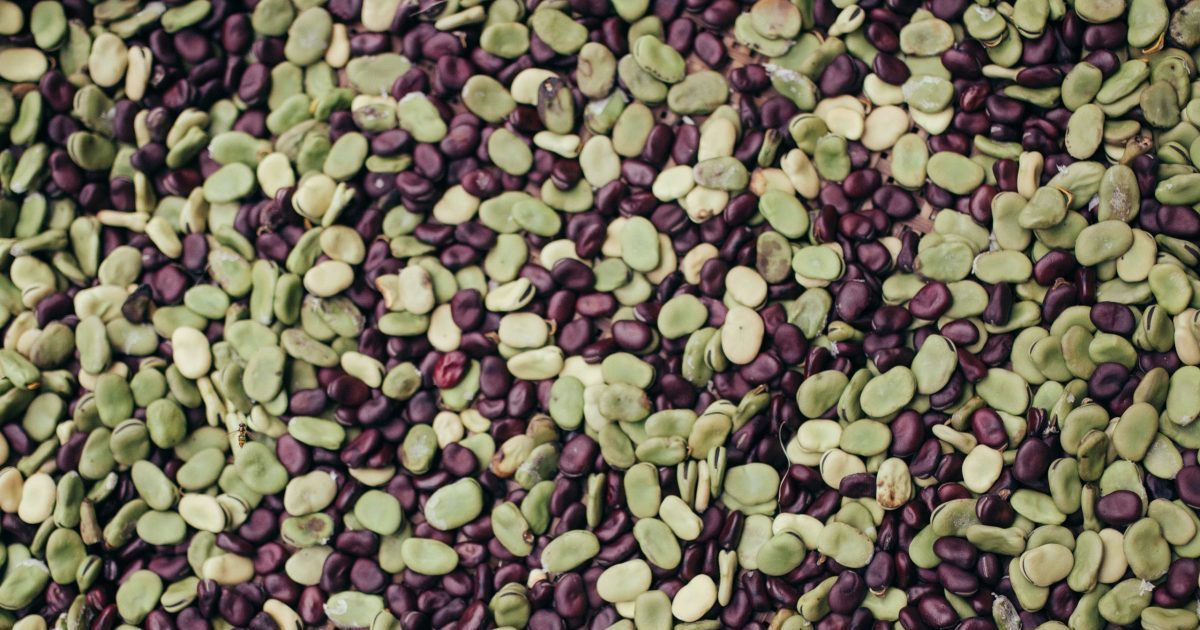
Lima beans, while less toxic than red kidney beans, contain linamarin, a chemical compound that can turn into hydrogen cyanide when your body processes it. While you may have to eat a lot of beans to get sick, as long as you cook and drain them thoroughly, you should be fine.
Mushrooms
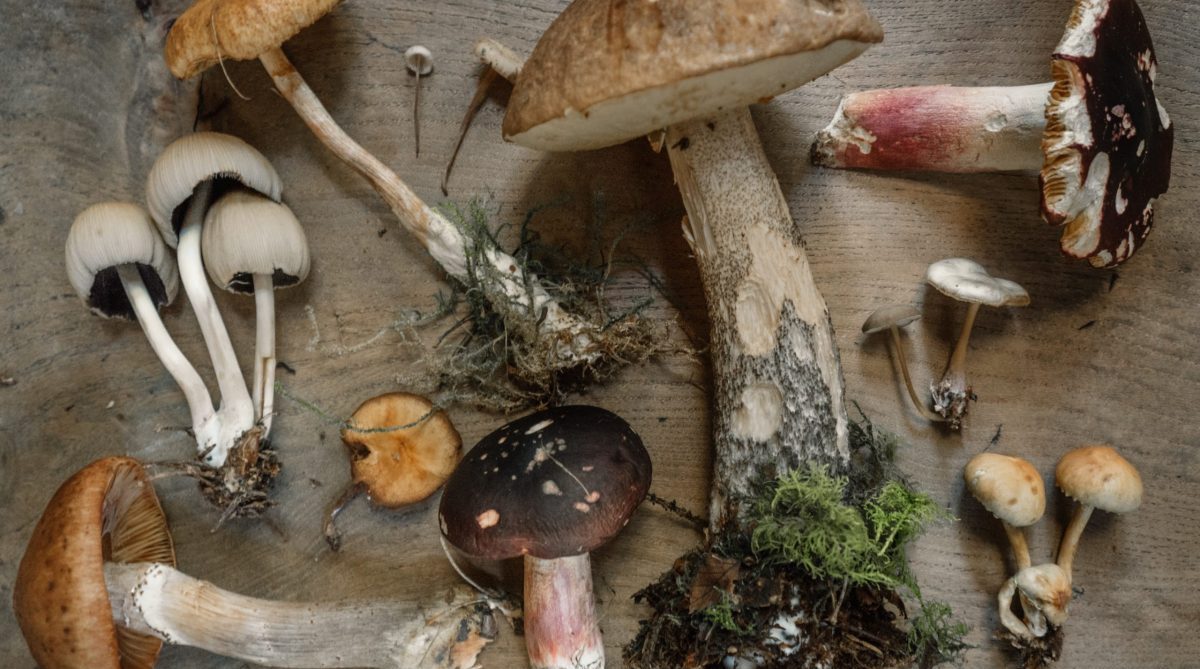
While some fungi are safe to consume, others are deadly. The “death cap” and “destroying angel” mushrooms were named for their effects on humans. If you aren’t sure of what you’re eating, don’t risk it because these mushrooms can kill you. Deadly mushrooms can resemble edible varieties, and even experts have difficulty telling them apart. Author Nicholas Evans almost died of liver failure after picking a deadly variety called the webcap. In San Francisco, fourteen people were poisoned by death cap mushrooms—three of them required a liver transplant. One of the victims was an eighteen-month-old baby.
Tomatoes
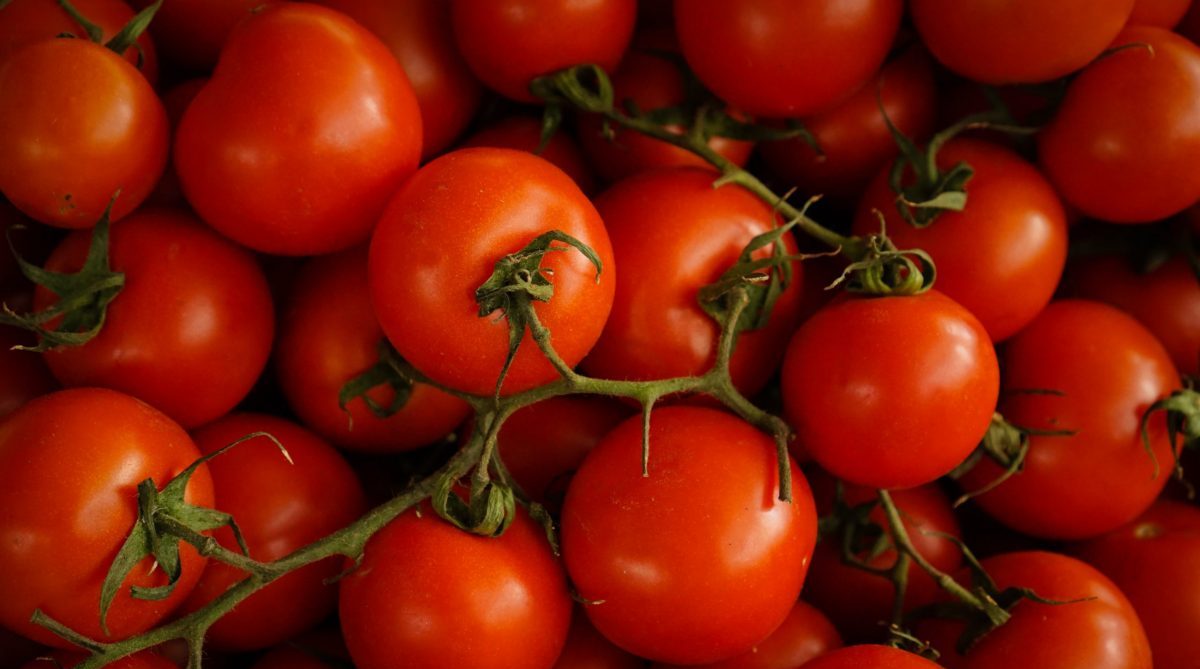
The leaves and stems of tomatoes contain glycoalkaloids, which can cause upset stomachs, severe cramping, and anxiety. So, if you’re going to eat them, make sure you avoid the leaves and stems!
Tuna
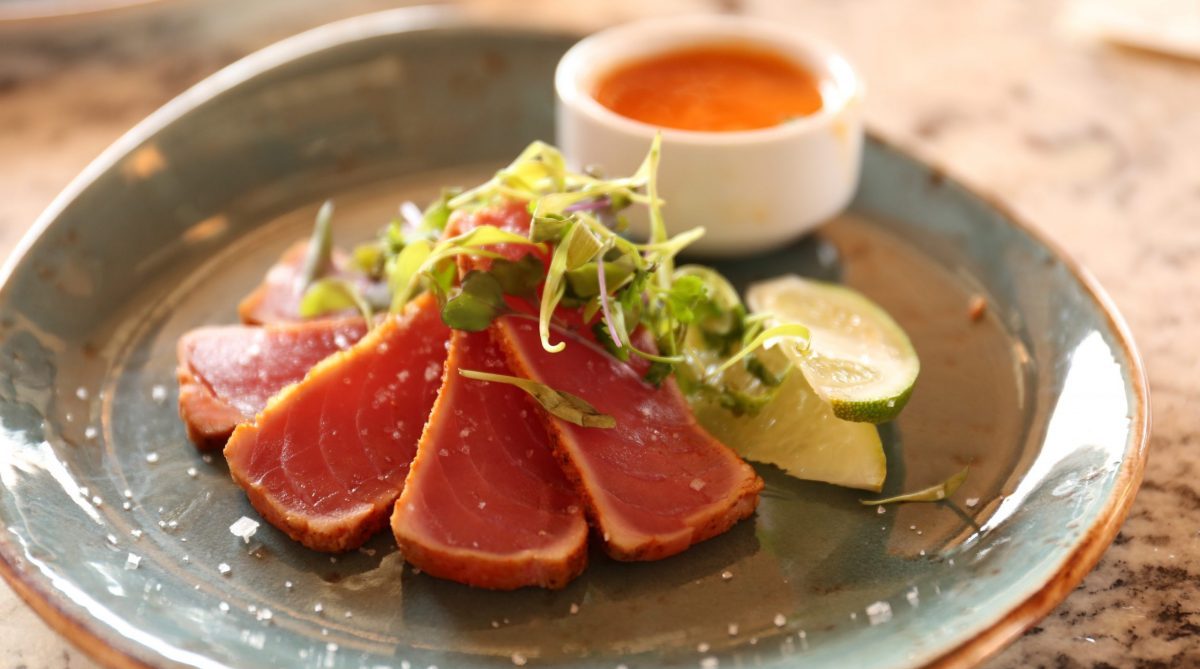
You’ve likely heard that mercury is a dangerous substance, and that’s why you should be careful of how much raw tuna you consume. Even if the fish has been prepared by a professional, it may still contain traces of mercury. Once ingested, this chemical can cause itching and pain, among other symptoms.
Chili Peppers
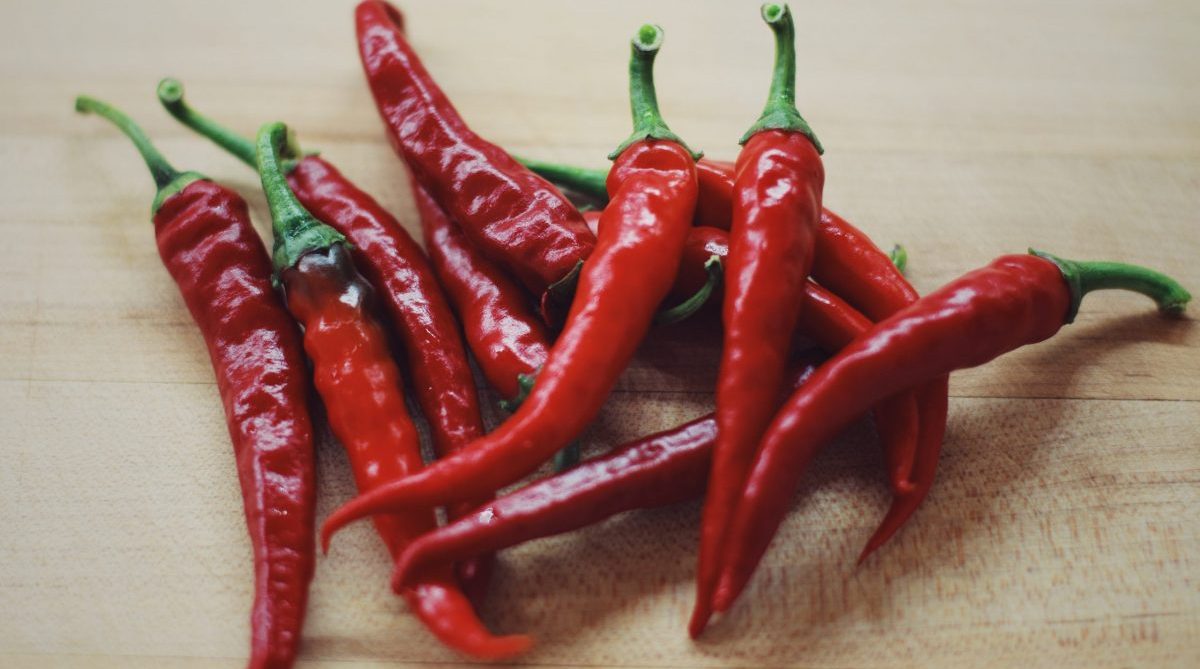
Peppers contain a chemical called capsaicin, which makes them spicy. It’s also what’s used in pepper spray—but don’t worry, one pepper won’t kill you! However, eating a lot of them at once can cause your lungs to constrict – so steer clear of any pepper-eating contests.
Unpasteurized cheese
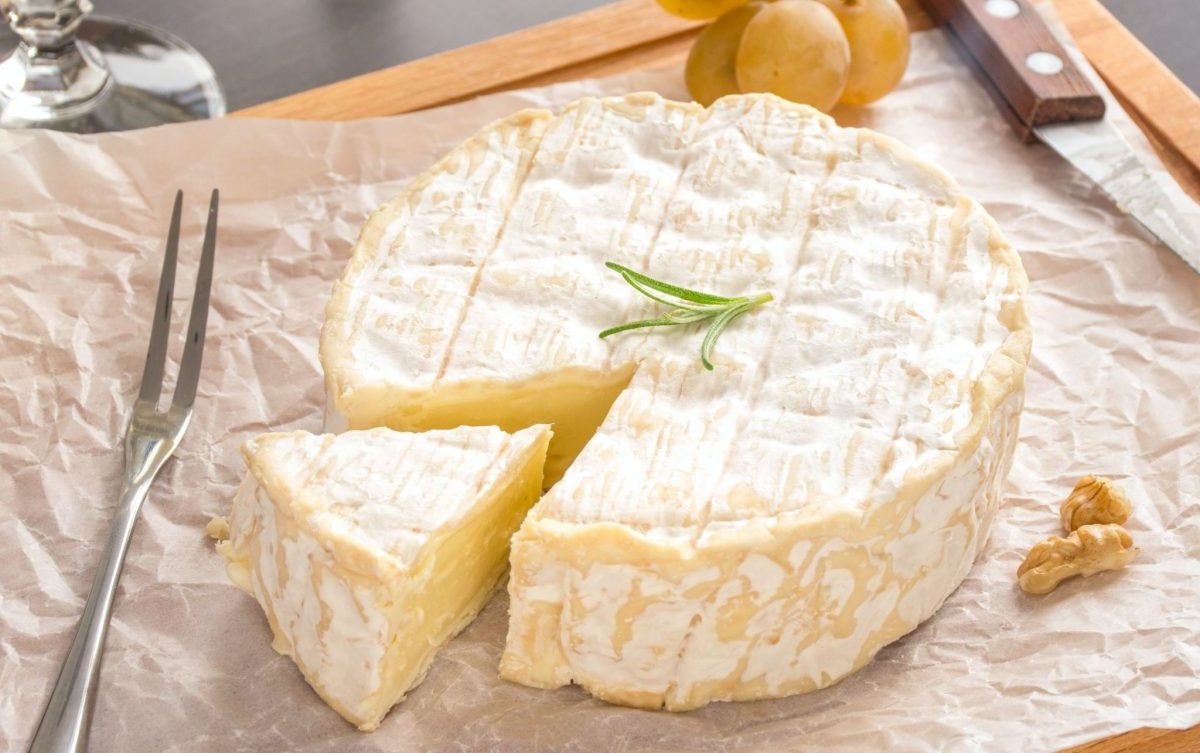
Unpasteurized cheese — or “raw” cheese — isn’t imported commercially to the U.S. The FDA has determined this cheese is a host for deadly food-borne illnesses and bacteria.
Margarine

You don’t need to worry about the fats in butter, but you should keep an eye on your intake of margarine. Many tubs are high in hydrogenated oils — the kind that pack trans fats. These can increase your risk of heart disease and cancer.
Apricot seeds
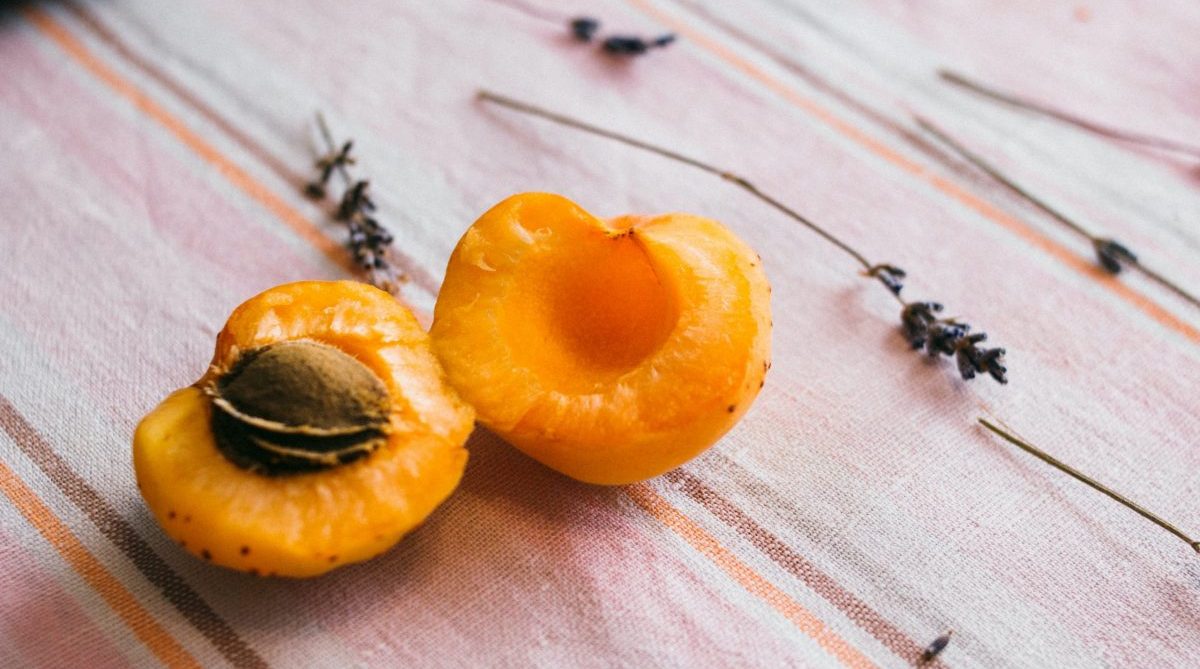
You can usually find fresh and delicious apricots in the produce section of the grocery store. This may seem surprising, considering how deadly their seeds are. Apricot seeds contain a chemical called laetrile or amygdalin, which is highly toxic when ingested. When broken down by the body, amygdalin converts into hydrogen cyanide and can kill the person who consumed it.
Apples
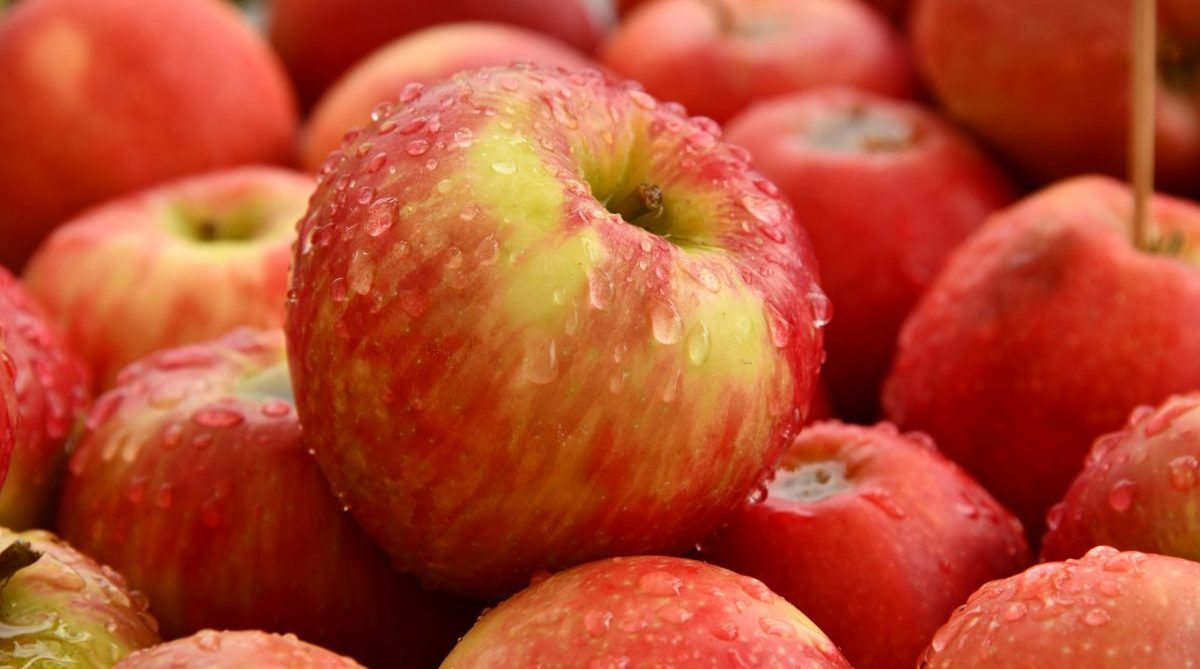
Like cherries and apricots, the seeds of apples contain cyanide, but few people know this. If you ate enough apple seeds, you could get sick from cyanide toxicity. Apple seeds contain small amounts of amygdalin, a compound that can release cyanide when metabolized. However, you’d have to eat at least 18 whole apples to ingest enough cyanide to be dangerous.
Blood Clams
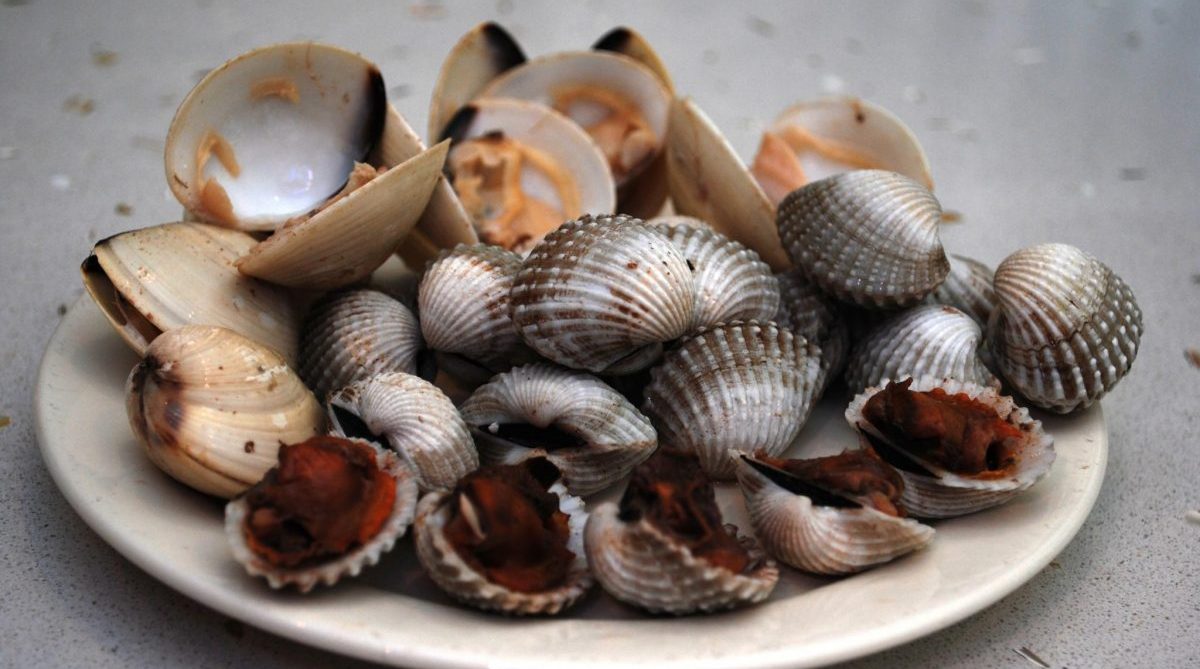
Blood clams are found along the coastlines of South Africa to northern Japan, where they live in low-oxygen environments. They filter up to 40 liters of seawater a day, making them more likely to absorb harmful bacteria and viruses—including hepatitis, typhoid, and dysentery. The common Chinese preparation of boiling the clams, which is only done for a few seconds, does not kill the viruses. The clams were banned in Shanghai following a hepatitis A outbreak in 1988.
Silver Stripe Blaasop

The liver, skin, and reproductive organs of silver stripe blaasop contain a poison that can cause respiratory failure and fatal muscle paralysis in humans. Despite this, the bony fish has been a favorite for centuries in some parts of the Indian and Pacific Oceans.
Giant Bullfrogs
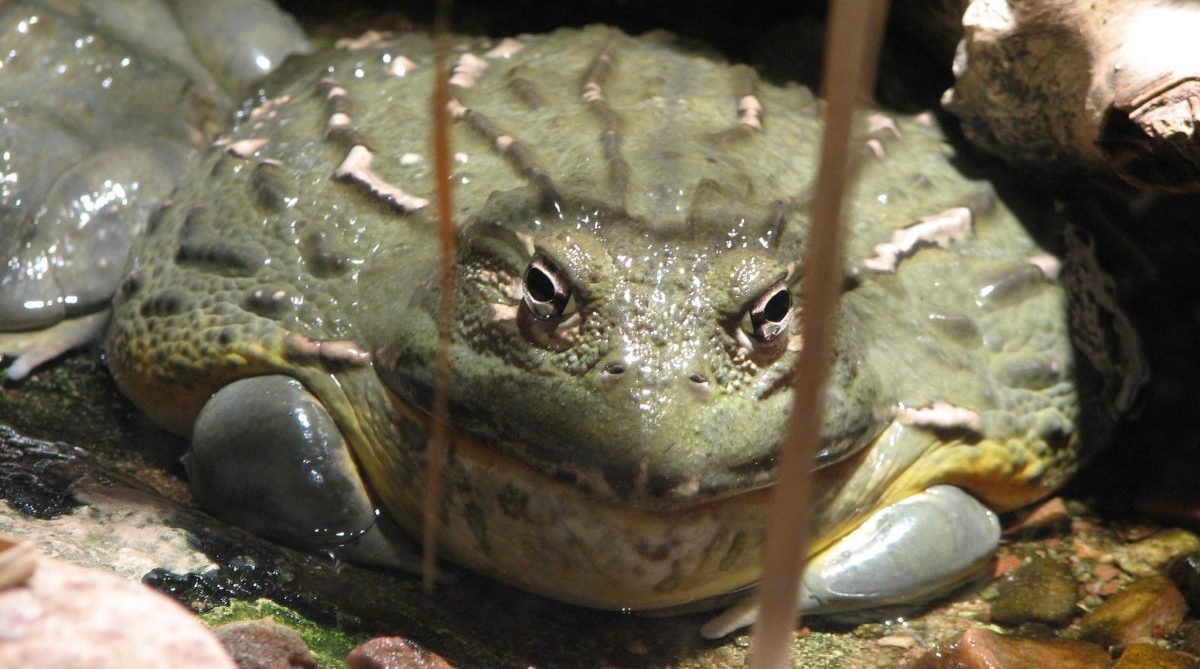
Giant Namibian bullfrogs are a delicious delicacy in Africa, but those who enjoy them know to wait until after the third rain of spring, when the frogs start croaking and breeding. At other times of year, toxic compounds in their skin and organs can cause kidney failure and death.
Bamboo Shoots
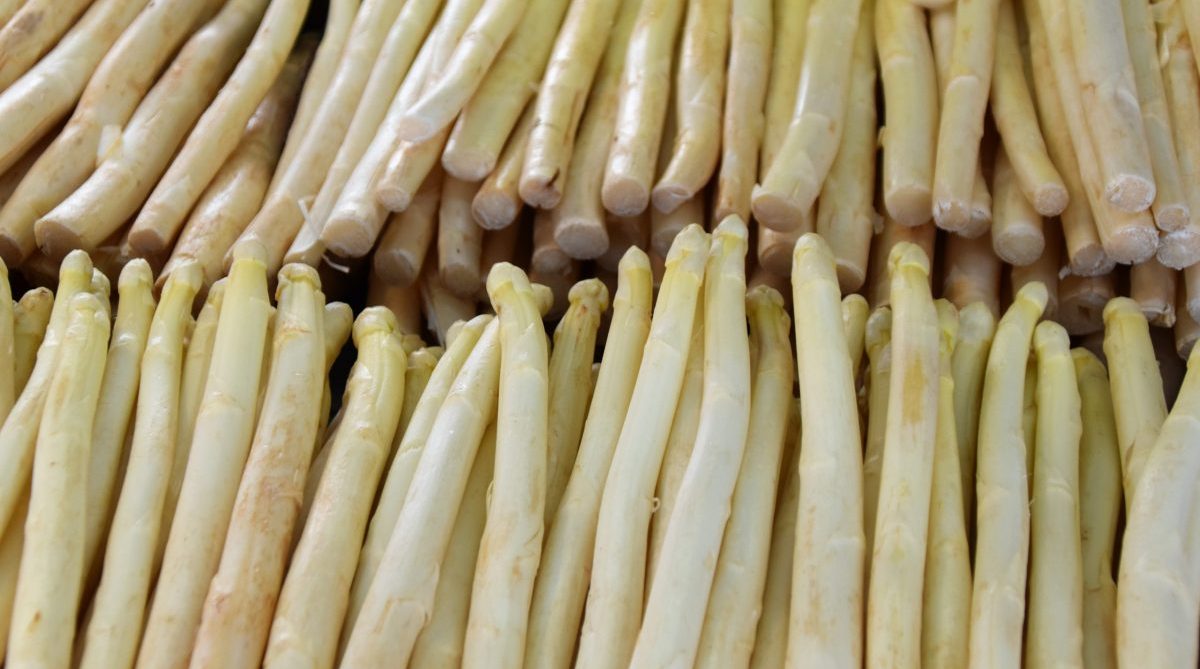
Bamboo shoots, a common ingredient in Asian cuisine, are safe for human consumption only after they’ve been boiled, and their fibrous exteriors cut away. Before boiling, these shoots contain toxins that produce cyanide when digested by the body.
Lychee
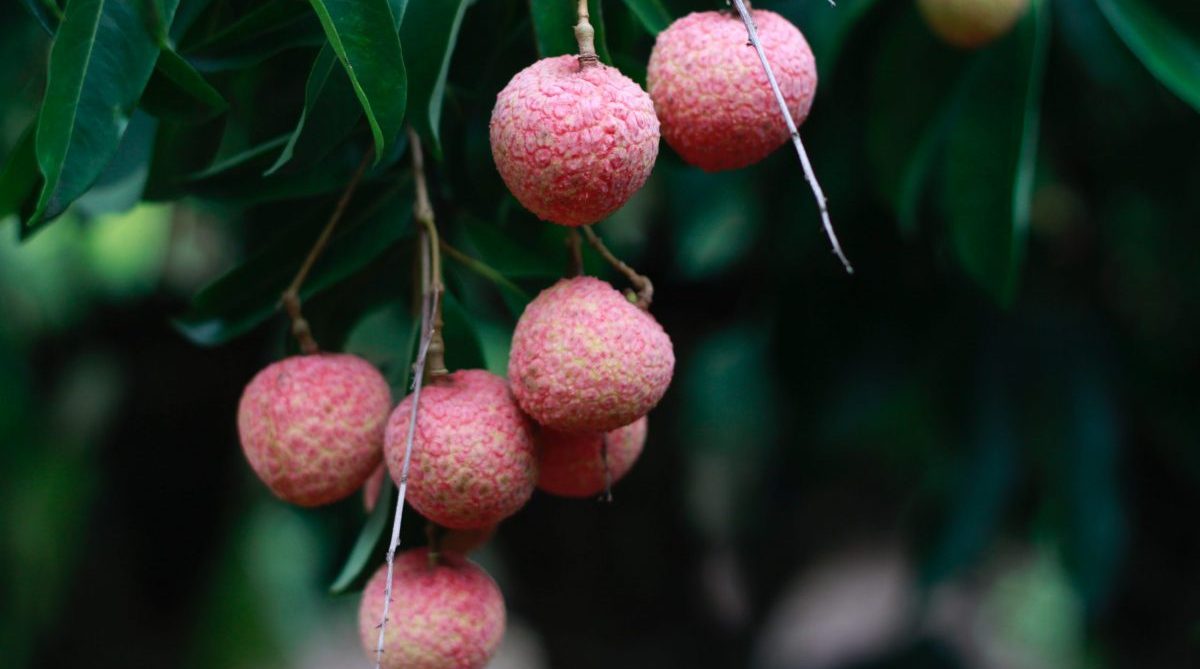
The lychee fruit, which is popular in China and Southeast Asia, poses the same risks as ackee when it’s consumed before it’s fully ripe. Unripe green lychees contain toxins that block the body’s production of sugar, leading to hypoglycemia and changes in brain function.
Red Scorpionfish
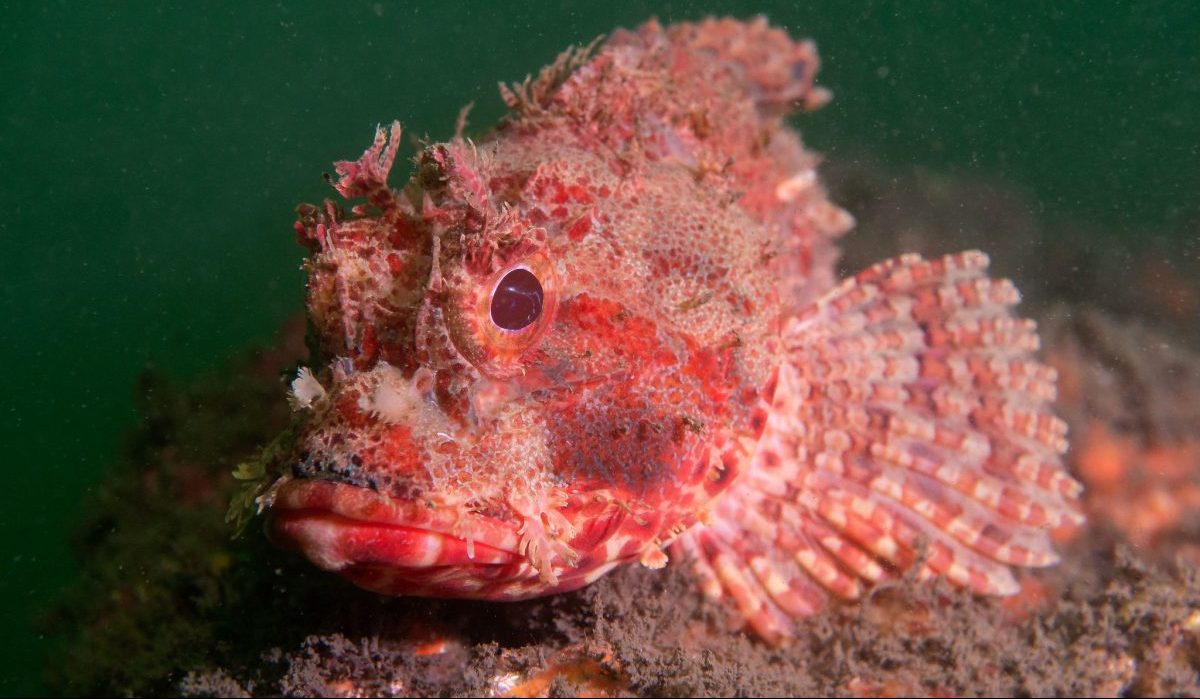
Red scorpionfish, though esteemed for its flaky, crab-like flavor, is generally avoided by local fishermen because it has 12 to 13 venomous spines and spiky fins. A red scorpionfish’s sting is said to cause excruciating pain lasting as long as half a day.
Starfruit
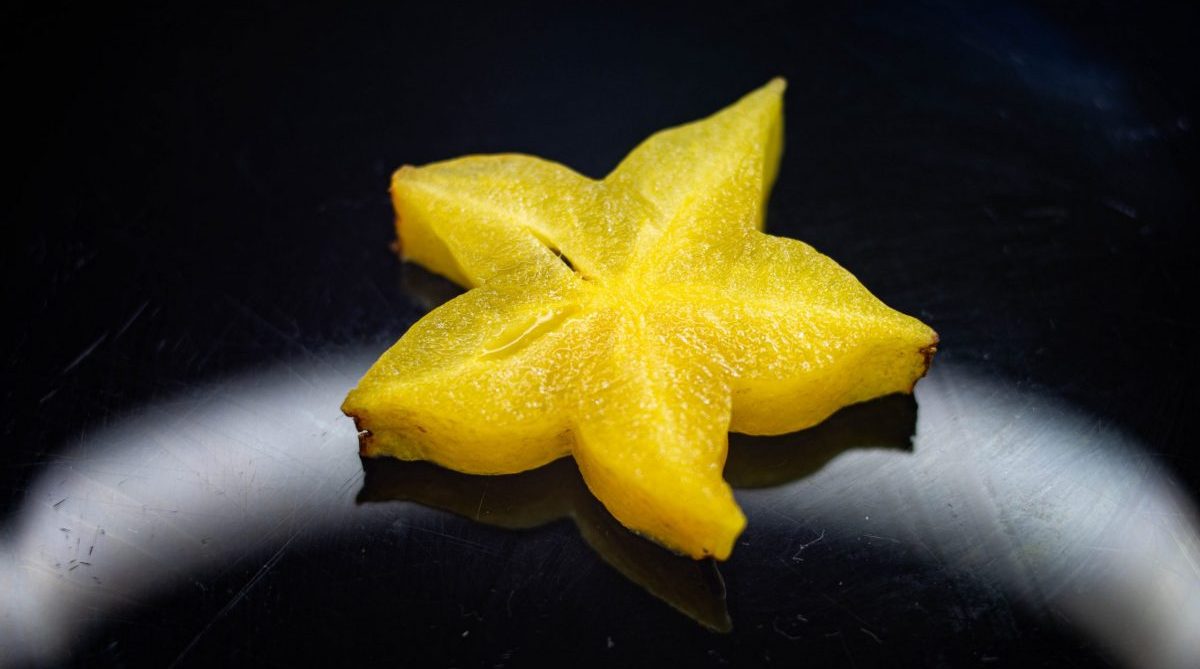
Starfruit is an herbal remedy that can be used to treat certain ailments, but it’s potentially dangerous for people with kidney problems. Healthy kidneys usually remove the toxins in starfruit, but those with chronic kidney problems are at risk of neurological problems, such as confusion, seizures, and sometimes death.
Brazil Nuts
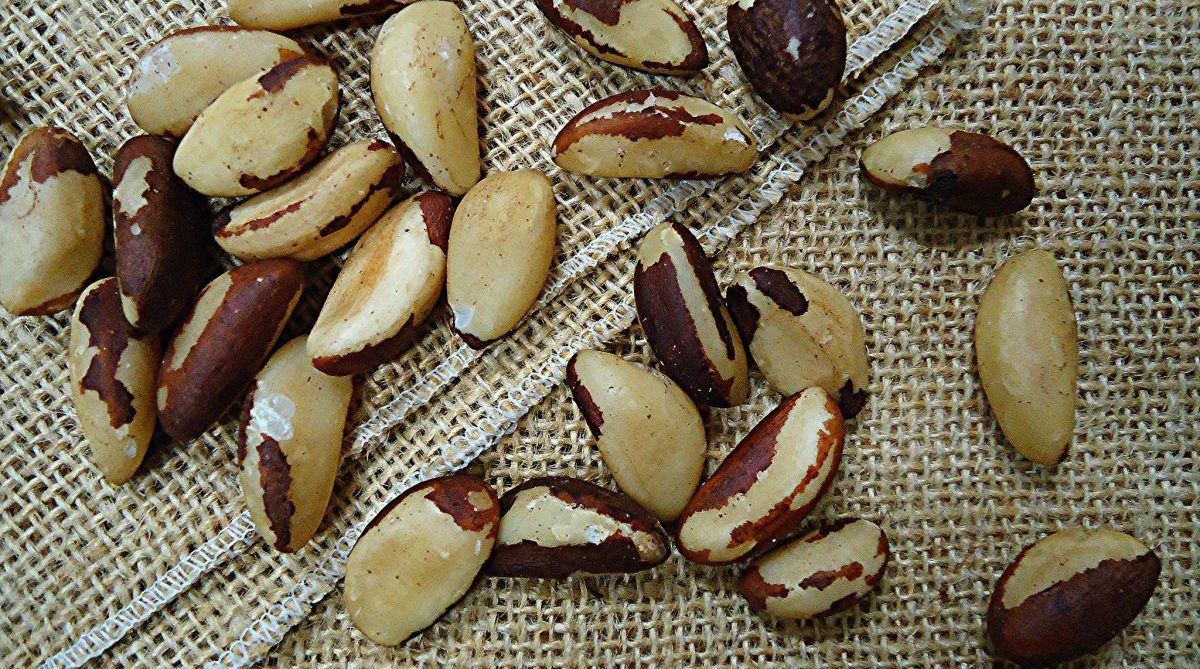
Brazil nuts have a high nutritional value and are rich in dietary fibers, minerals, and fatty acids. However, their shells contain high levels of aflatoxin, which is a carcinogen that has been linked to liver cancer and stunted growth in children. For this reason, the European Union has imposed strict regulations on the importation of Brazil nuts in shells.
Asparagus Berries
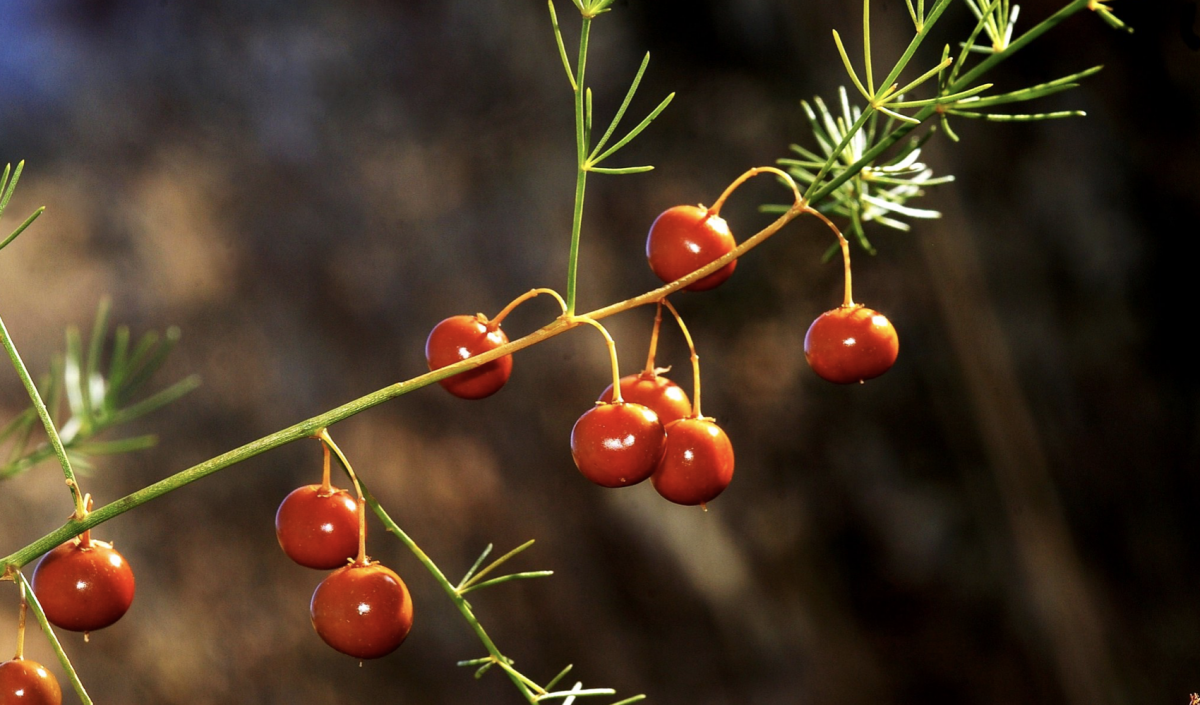
If you grow your own asparagus and happen to own a cat or dog, then you should probably stay away from the plant’s bright red berries. Asparagus spears are fine to eat, but the plant itself also produces bright red berries that can be toxic to humans (and cats and dogs).
Chewing Gum

Many people enjoy chewing gum, but if you’re like one woman who chewed 14 sticks a day, you may be risking your health. Chewing gum interferes with the body’s ability to absorb minerals vital to health and exposes you to potentially dangerous artificial sweeteners. If you still feel like chewing gum after lunch, go ahead—just keep it to a few pieces a day.
Energy Drinks
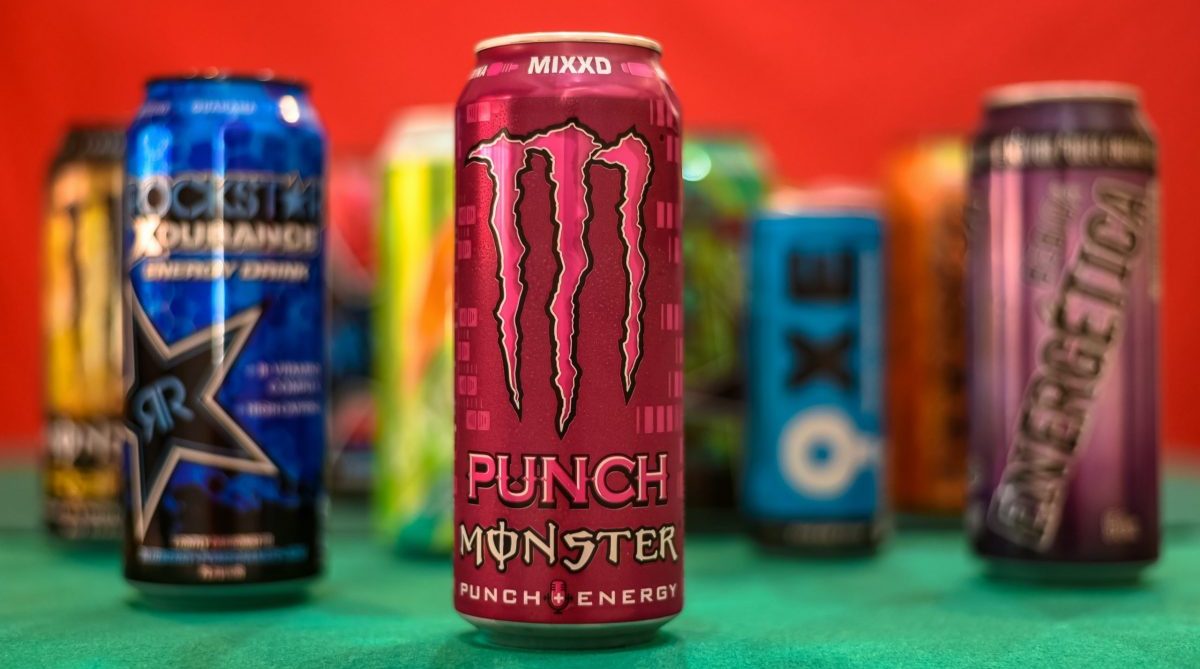
Don’t worry—you can still enjoy your daily energy boost! But drinking three or more energy drinks in a day can be dangerous, as one Australian truck driver died from doing so. Too much caffeine, in the form of energy drinks and sodas, can cause headaches and diarrhea, and mixing energy drinks with alcohol can lead to irregular heartbeat, convulsions, and even death. So instead of reaching for a 3 p.m. caffeine pick-me-up, try eating foods that give you lasting energy throughout the day.
Stinging Nettles
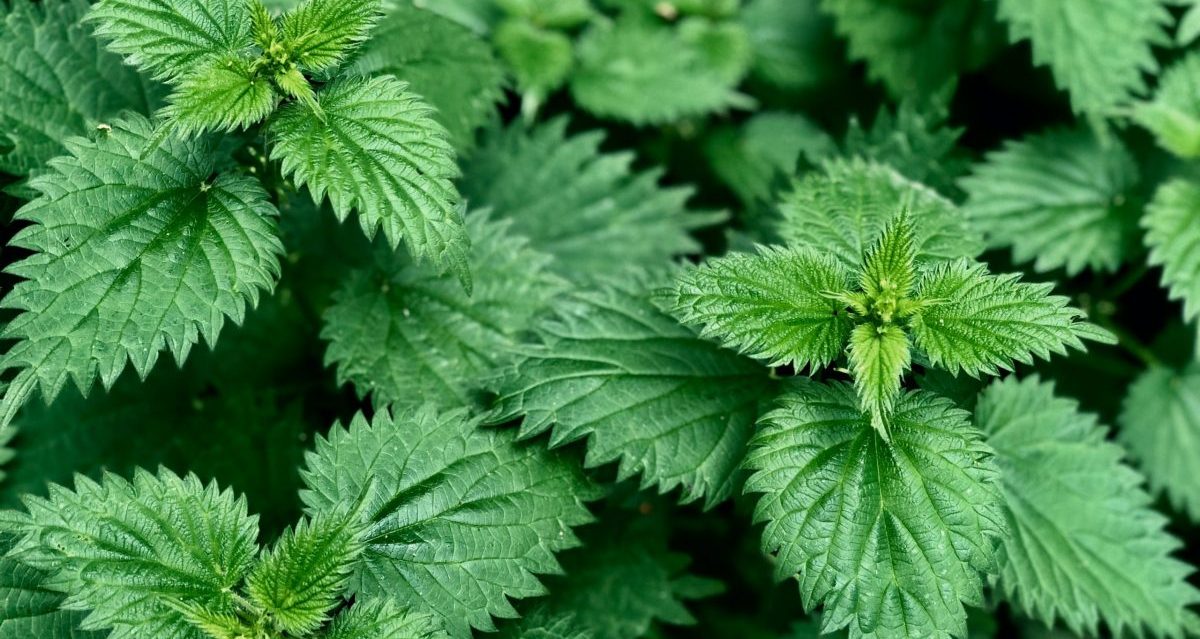
We’ve all been there. You come home from work, wiped out and starving, ready to put your feet up with a nice meal and there it is: stinging nettles! Well, strange as it may sound, as most people associate these invasive weeds with being invasive and painful, they can be consumed somewhat safely if blanched in saltwater. The result can be used as a spinach substitute or to even make tea!
Stonefish

The stonefish certainly doesn’t sound nice, does it? Sounds like a big meanie. Nothing they’d have brought to life in the likes of Finding Nemo or Shark Tale. These sea creatures are one of the most venomous known to man and, of course, a delicacy in certain parts of the world, because why not! Over in East Asia, they serve stonefish as raw sushi with its dorsal fins, the main source of venom, removed. Still… let’s not shall we?
Monkey Brains
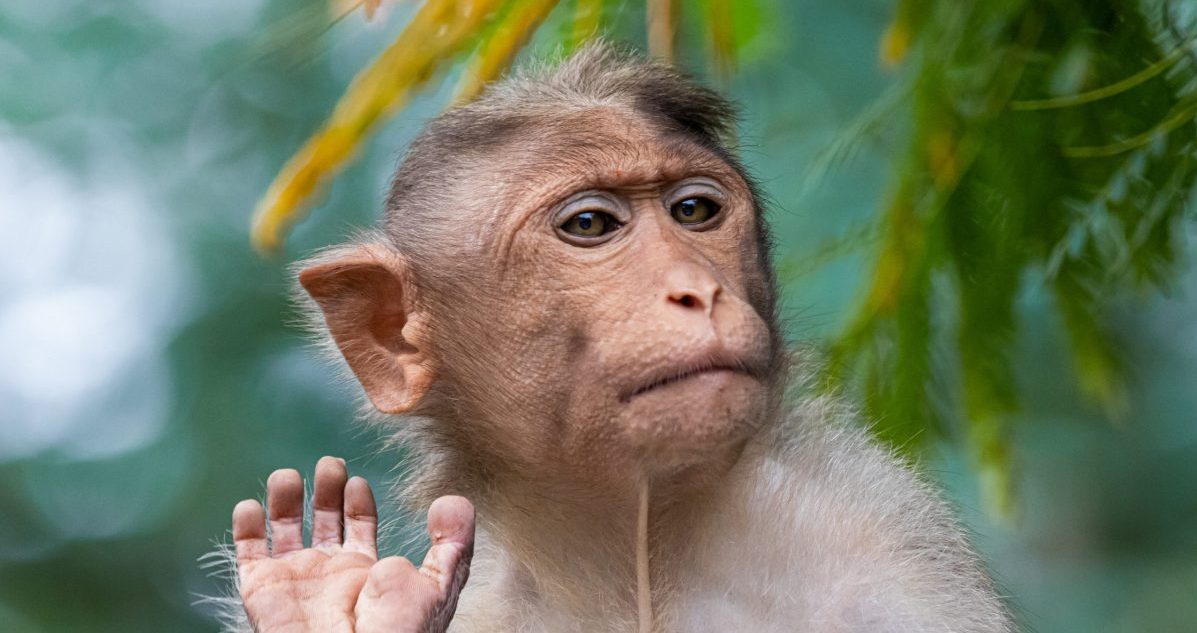
Monkey brain is one of those “foods” where if someone gets sick eating it, it’s hard to have any sympathy. Believe it or not, this… exotic cuisine was a bit of a hit in China before being criminalised, shocking as the concept may be that law enforcement had to come between humans and a bowl of monkey brain. This is probably to do with the fact that eating nervous system tissue leads to transmission of fatal encephalopathies like variant Creutzfeldt-Jakob disease.
Chaya
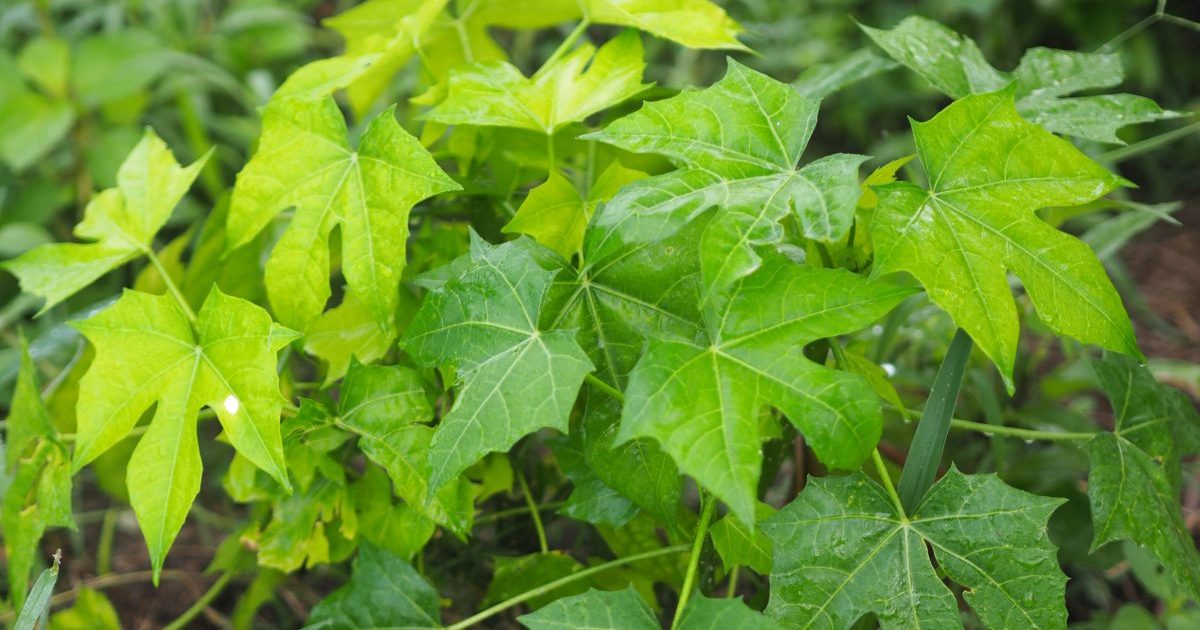
Sometimes known as tree spinach, chaya is a vegetable found in Mexico’s Yucatan Peninsula and popular among Central American cuisine. The preparation is key here: pronged leaves should be immersed and simmered in oil prior to eating. This removes the stinging hairs and nullify its toxic cyanide-producing compounds. Yikes.
Underripe Tomatillos
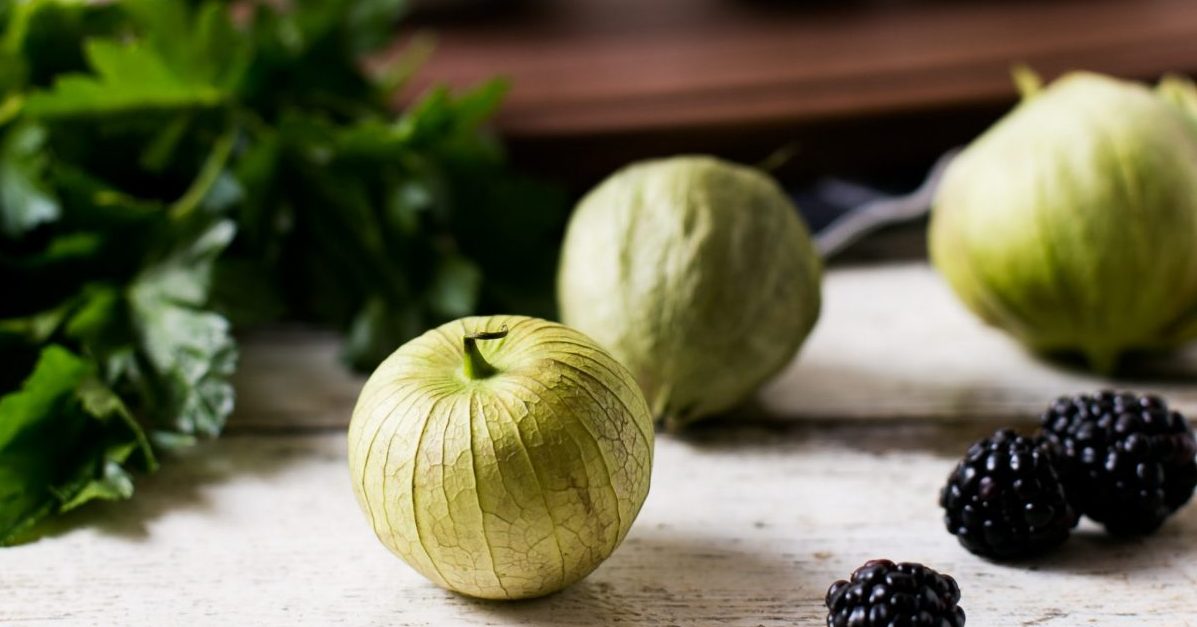
When a tomatillo grows on a vine it is covered by a papery “lantern” which dries and peels off on its own as the tomatillo ripens. Some claim that the tomatillo inside may be toxic before the lantern peels, which doesn’t really matter, as the fruit is sour at this point anyway. It’s important to note that the lantern, leaves AND stem of a tomatillo are poisonous so wash them well.
Absinthe
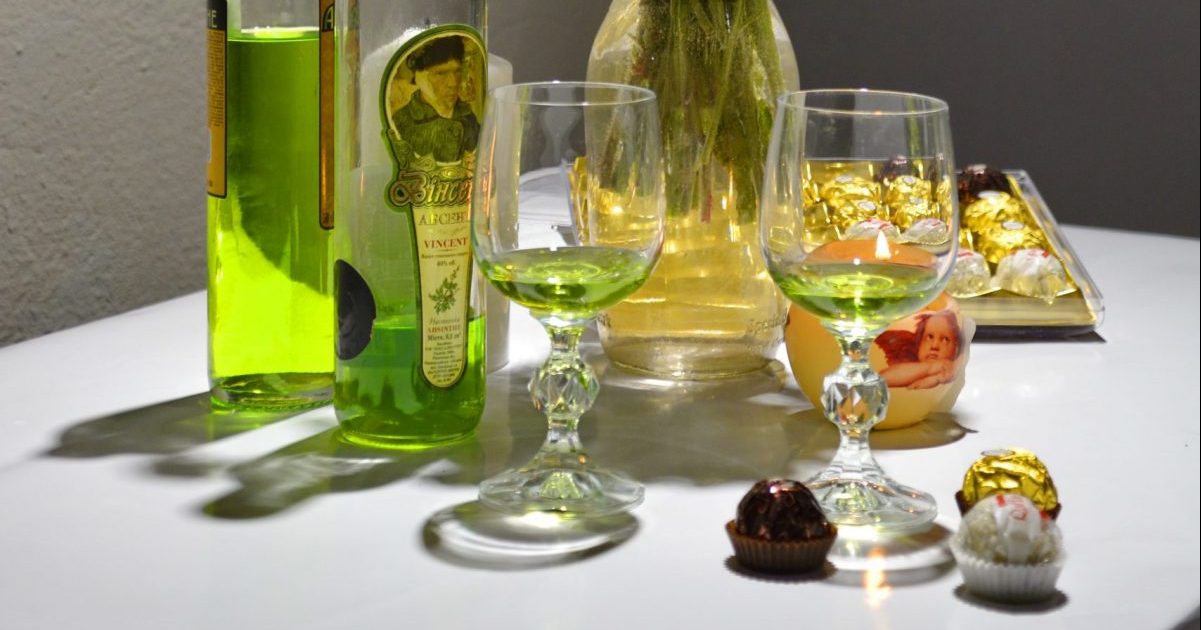
This bright green tipple may look like a sugary energy drink but it was actually the LSD of the late 19th century, with Henri Toulouse Lautrec and Vincent Van Gogh both being noted fans and sufferers. Over in the United States, its hallucinatory reputation kept it banned for over 100 years until 2007. Made with the leaves of wormwood, which contains the thujone chemical, a glass of this stuff could lead to seizures and kidney failure.
Dragon’s Breath
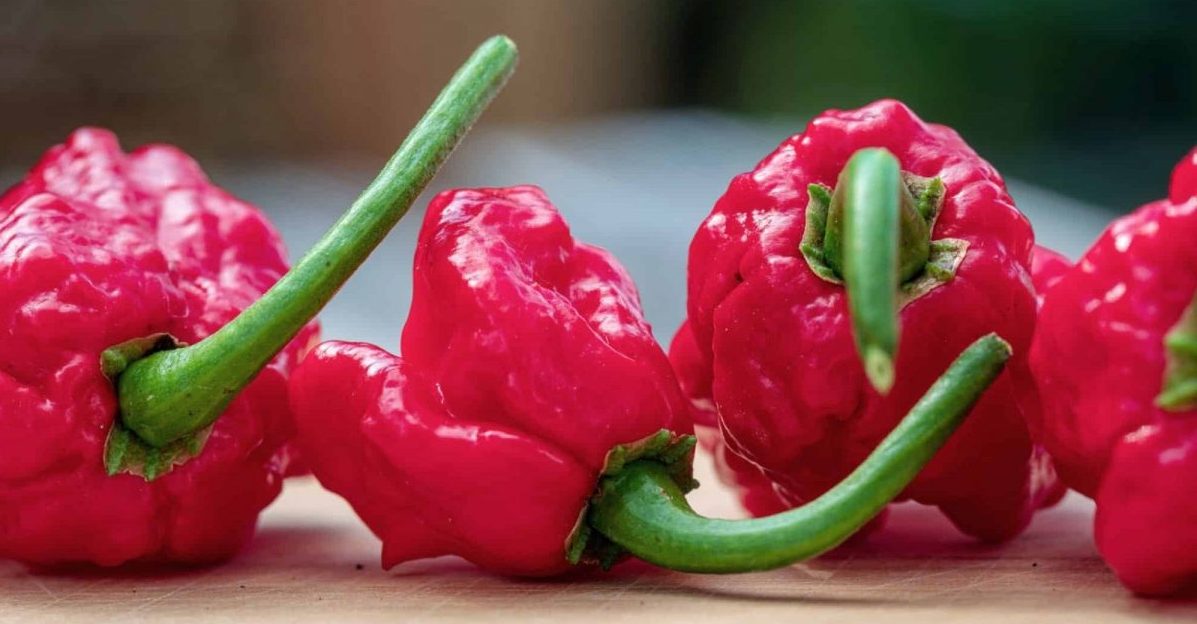
Thought the Carolina Reaper was the hottest pepper on earth? Try Dragon’s Breath (actual name). While the puny Carolina Reaper comes in at 1.6 million heat units on the Scoville scale, Dragon’s Breath boasts a whopping and highly dangerous 2.48 million. For context, a habanero pepper has 350,000 heat units. Dragon’s Breath could close your airways and cause anaphylactic shock, so tread carefully guys!
Feseekh
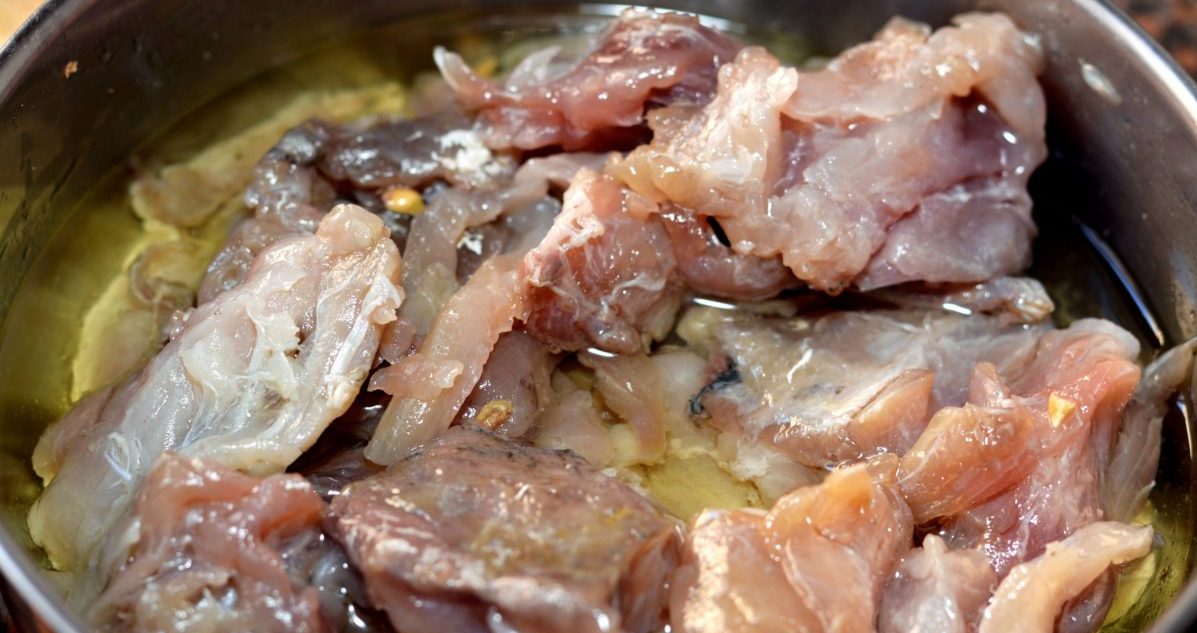
It’s common in Egypt for people to get rushed to hospital after eating feseekh, a fermented fish delicacy. Feseekh is sun-dried and then fermented in salt for a year. During the fermentation process, the bacteria Clostridium botulinum can be produced, which can lead to botulism, a paralysis that begins in the face and continues through the body!
Larb

The official dish of Laos, larb is a raw meat salad, and like all raw meat salads, they can cause problems. Likely due to the raw meat. In California in 2016, 12 people were poisoned with trichinellosis after eating raw wild boar larb and in 2021, it killed two dozen people in Thailand. Next time you’re at a restaurant and they offer both raw and cooked meat, choose cooked.
Coconuts
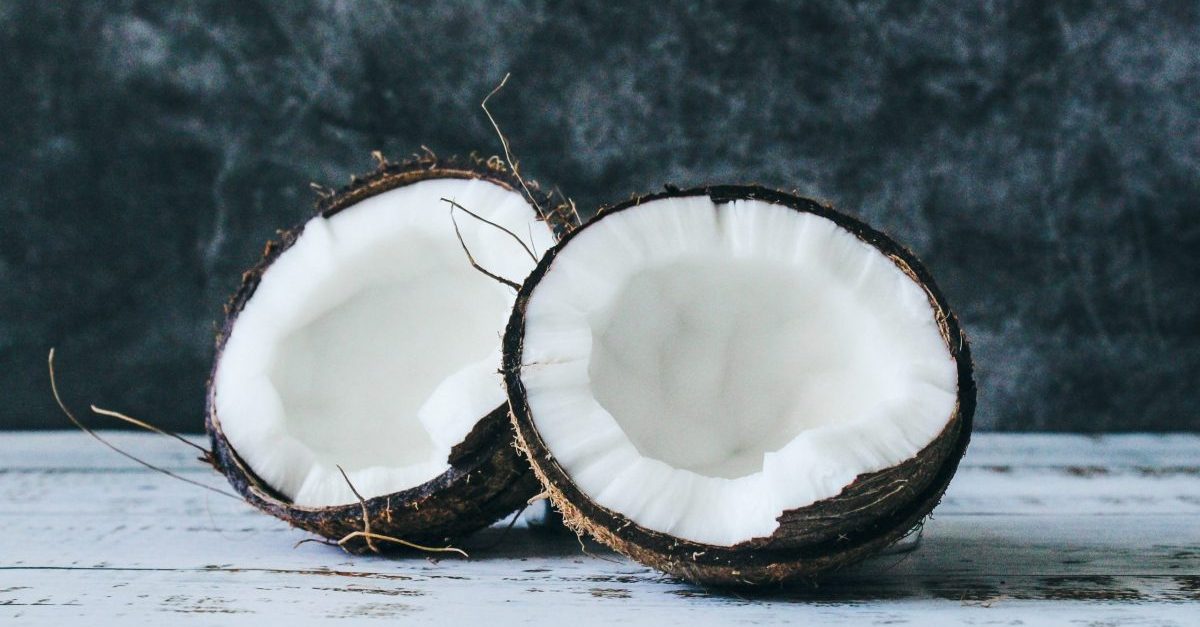
You’re laughing? Some people have been killed by coconuts in the past and you’re laughing? Just because you don’t digest a food doesn’t mean it can’t prove fatal. The jovial if lethal coconut has proven this in the past. Rolling Stones legend Keith Richards almost lost his life thanks to coconuts back in 2006. Now, to be fair, he fell out of a coconut tree instead of having a coconut fall on him, but still. This fruit’s track record speaks volumes.